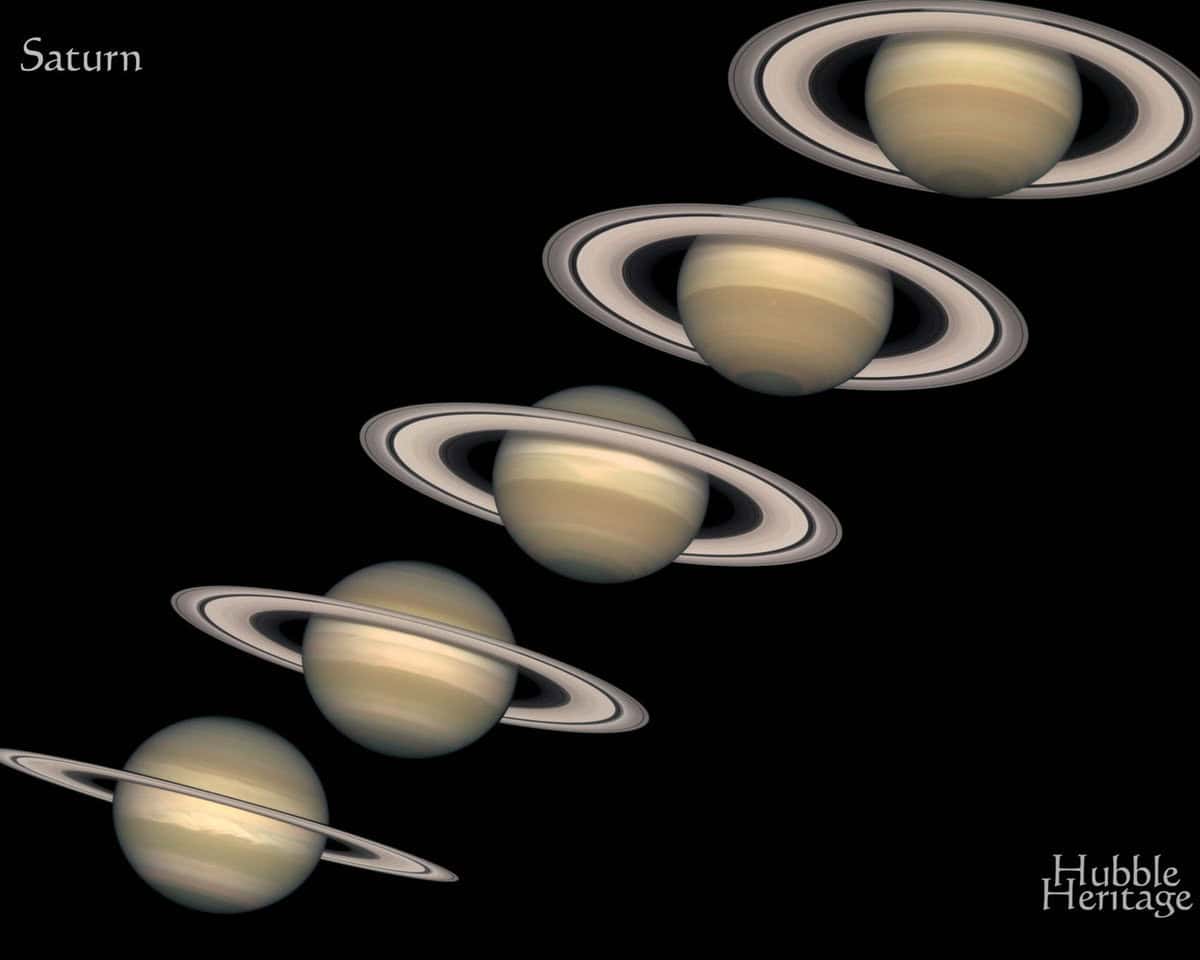

Scientific progress has come a long way in comprehending the physics of the universe. The pivotal figures in advancing this field were Isaac Newton and Johannes Kepler.
Newton formulated the law of universal gravitation, which provided an explanation for the nature and origin of celestial bodies’ motion. The law of universal gravitation states that objects are attracted to each other with a force that is directly proportional to their masses and inversely proportional to the square of the distance between them. An object can exist in any of the three physical states (solid, gas, liquid).
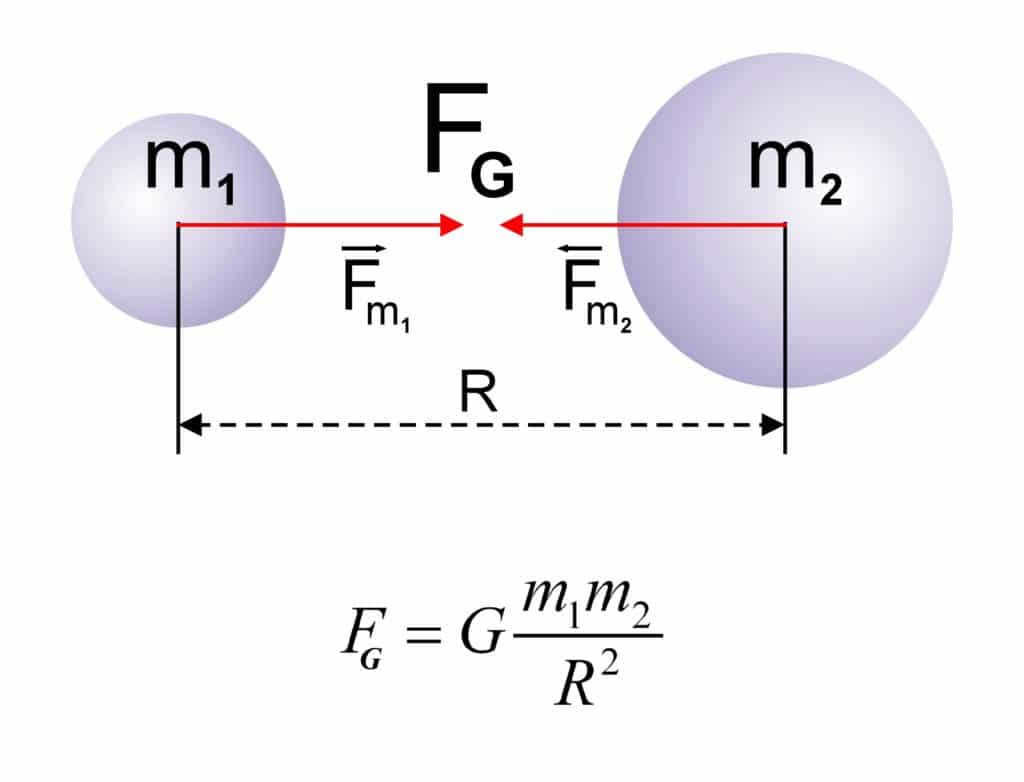
The legislation is applicable to particles with insignificant weight in addition to substantial objects. There exist several forces that induce the movement of the planets.
The Sun possesses the largest mass in the solar system. It exerts gravitational attraction on all the planets in the solar system, determining their specific paths of motion.
Kepler’s Laws
An influential discovery was made by I. Kepler, who established three principles that explain the planetary motion:
1) The planets orbit in an elliptical path, with the Sun positioned at one of the foci.
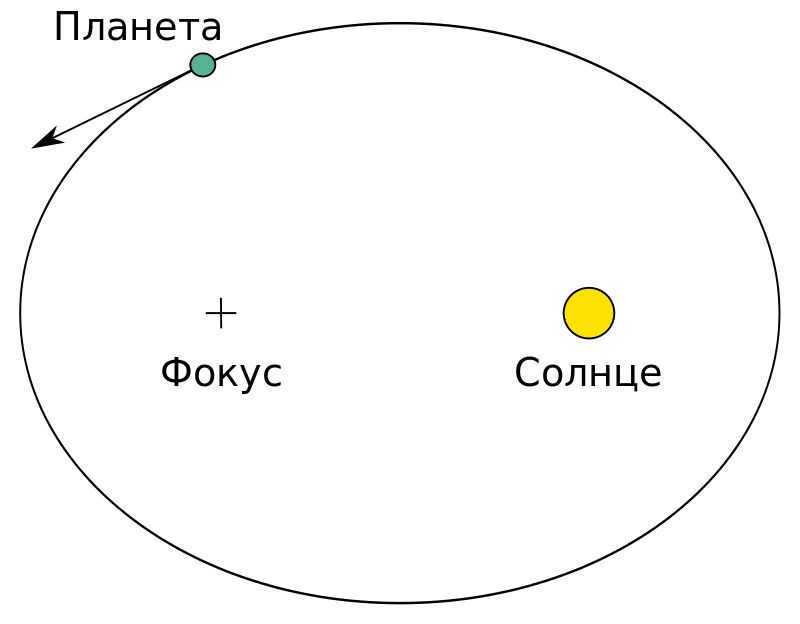
2) The Sun’s center is intersected by the plane in which a planet orbits. The planet’s radius-vector traces out identical planes during equal time intervals. The velocity of the planet increases as its distance from the Sun decreases.
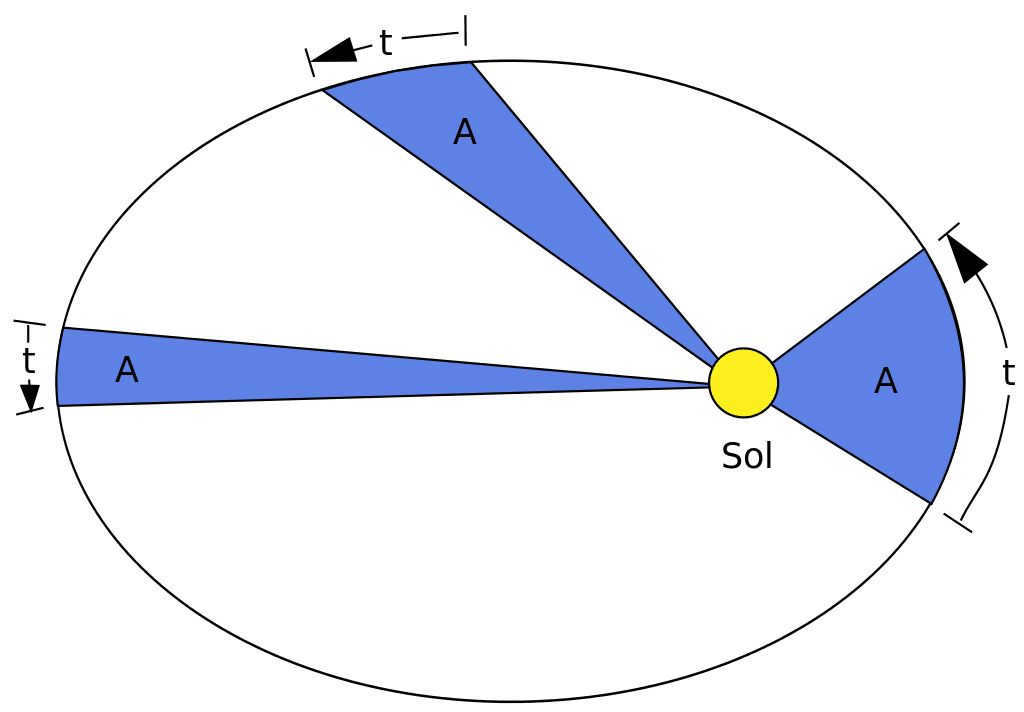
3) The cubes of the major semi-axes of the orbits of the planets are related to the squares of the periods of their orbital revolution around the Sun. Celestial bodies have a point in their orbits where they are nearest to the Sun and another point where they are farthest from the star. The major semi-axis is the segment that connects these two points.
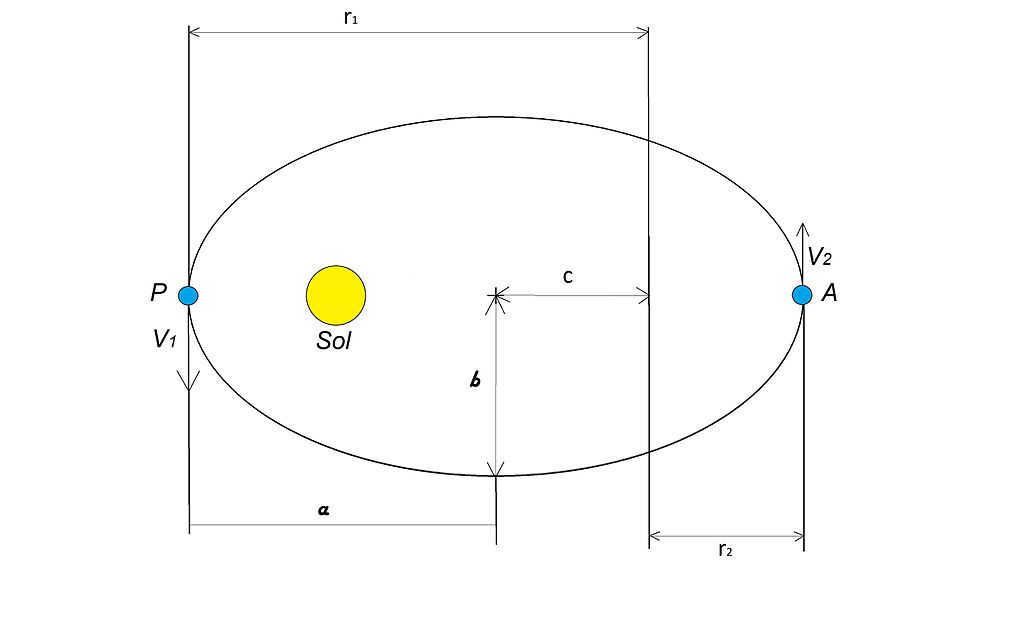
Kepler’s laws are utilized for the determination of the planets’ path.
Orbit and rotation
An orbit is the path of a celestial object around another object with larger mass. It is measured in kilometers or astronomical units (where one astronomical unit is the average distance between the Earth and the Sun). An orbit can have the shape of a circle, ellipse, parabola, or hyperbola.
The term “Saturn’s orbit” refers to the path of this planet around the Sun. Saturn’s orbit takes the form of an ellipse.
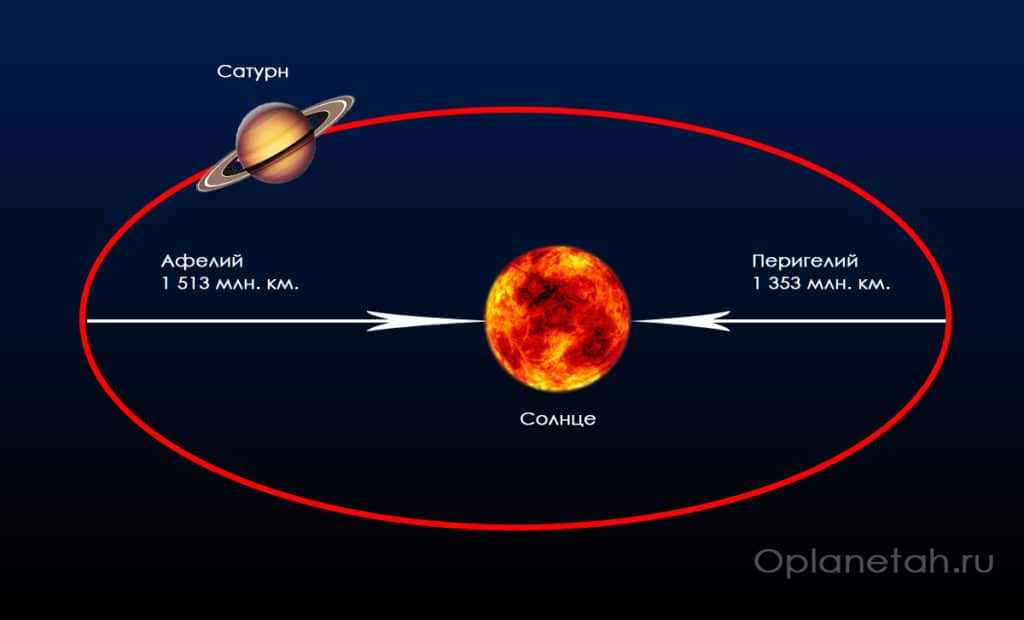
The Duration of Saturn’s Revolution
The duration of Saturn’s revolution around the Sun is known as its orbital period. It is also referred to as the sideric orbital period or sideric year. Saturn takes approximately 29.46 years, equivalent to 10,759 Earth days, to complete one orbit around the Sun.
The Duration of a Year
On Saturn, a year is equivalent to 29.46 Earth years or 10,759 Earth days.
The Length of a Day
Although Saturn is more massive than Earth, its high rotational speed results in shorter days compared to Earth. Saturn takes 10 hours, 34 minutes, and 13 seconds to complete one revolution around its axis.
The varying speeds of Saturn’s atmosphere movement contribute to the uneven duration of the day across different parts of the planet.
This phenomenon occurs because different parts of Saturn move at different speeds, while the magnetic pole and axis of rotation remain aligned. Consequently, determining Saturn’s rotational speed involves three methods employed by scientists.
The initial approach focuses on the South and North Equatorial Belt. The duration of a day in this region is 10 hours and 14 minutes.
The alternate technique involves the examination of other zones on Saturn. In these areas, the day lasts for 10 hours and 38 minutes.
In the third methodology, scientists utilize radio emissions to determine the length of a day, which is measured at 10 hours and 39 minutes.
Data collected from spacecraft missions aimed at studying Saturn provided different results. The Voyagers recorded a day length of 10 hours and 45 minutes.
Seasonal variations
Similar to Earth, Saturn experiences seasonal changes that last approximately 7 Earth years. The seasons on Saturn can be determined by observing its iconic rings. At certain times, the rings are fully visible from Earth, while at other times only a small portion can be seen.
When the rings align with the Sun, they cast a shadow on the planet, creating a winter-like effect on Saturn.
These seasonal changes bring about significant temperature fluctuations and alter the appearance of the gas giant. The regions experiencing winter on Saturn exhibit a bluish hue, which is attributed to the decrease in ultraviolet radiation during this season. Conversely, summer on Saturn sees an increase in the intensity of ultraviolet radiation, resulting in a different coloration.
The angle between the plane of the equator and its orbit is known as the axial inclination angle. There are two methods to calculate it:
1) One way is by using the North Pole of the celestial bodies. In this case, the North Pole is defined as the point on the north side of the solar system.
2) Another method is by determining the North Pole using the right-hand rule.
Determining the axial tilt of Saturn presents certain challenges due to its composition. Saturn is primarily composed of hydrogen and helium, lacking a solid surface which makes observations more challenging. Additionally, different parts of Saturn rotate at varying speeds, leading to discrepancies in data regarding the planet’s day length. The axial tilt of Saturn is measured at 26.73 degrees.

The initial orbital speed
The initial orbital speed of Saturn is a physical parameter that indicates the velocity required for an object to remain in orbit around the planet. This velocity prevents the object from either falling onto the planet or escaping into space.
In order to calculate the initial orbital speed, it is necessary to have information about the mass of the object and the gravitational constant of Saturn. This value is approximately 25 kilometers per second.
Saturn, the Ringed Planet, has a year that lasts for a duration of 30 Earth years. Fascinating tidbits about Saturn
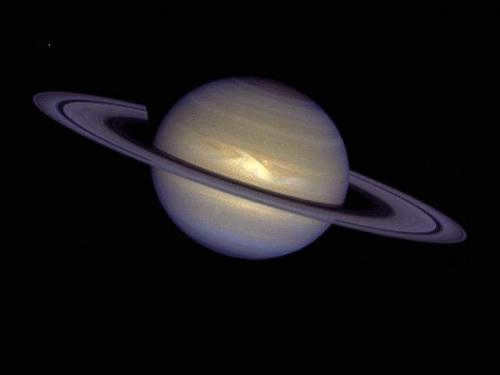
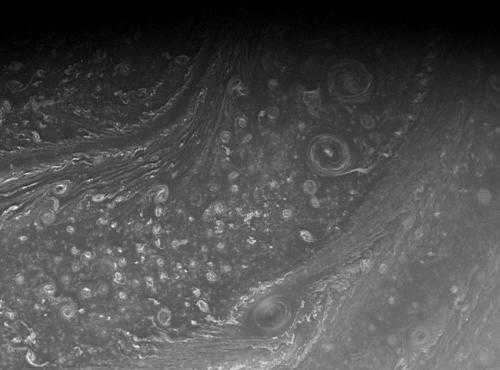
The surface of Saturn’s north pole
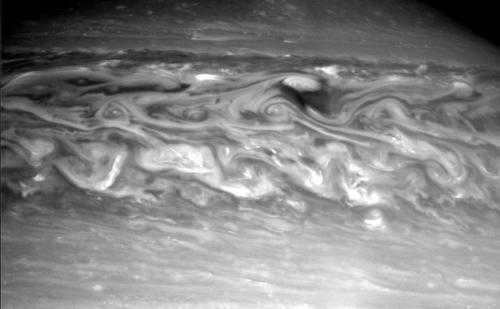
Clouds with a wavy appearance can be observed on the surface of Saturn. The rings of Saturn produce a trembling effect similar to the vibrations of a guitar’s strings. Interestingly, Saturn’s rings reflect a greater amount of light compared to its disk. The diameter of Saturn is estimated to be around 120,000 kilometers, and its mass is 95 times that of Earth. It is worth noting that the density of Saturn is only 0.69 times the density of water, implying that if there existed an ocean of appropriate size, Saturn would actually float in it.
One fascinating aspect of Saturn is the presence of incredibly strong winds, making it the planet with the most intense wind activity in the entire solar system. The Voyager spacecrafts have measured air speeds reaching up to 500 meters per second. These winds predominantly blow in an eastward direction, aligning with Saturn’s axial rotation.
Due to its rapid rotation on its axis, Saturn is noticeably flattened at its poles. The distance from the center of Saturn to its poles measures approximately 54,000 km, while the distance from the center to the equator is roughly 60,300 km. This means that the equator is located approximately 6,300 km farther from the center compared to the poles.
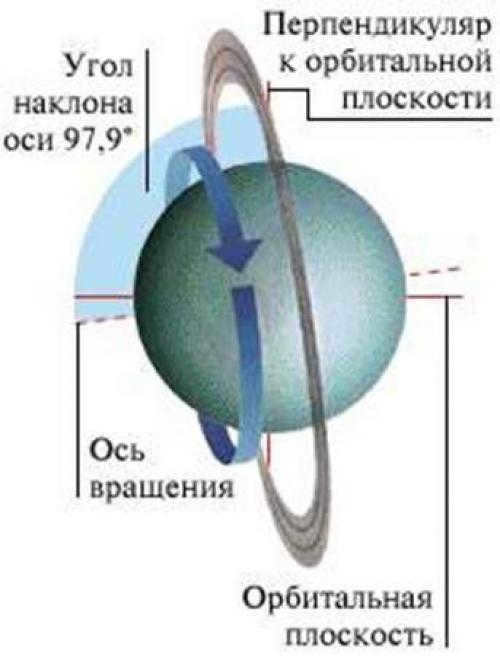
The rotation axis of Saturn is a fascinating feature. Saturn has three main rings which are easily distinguishable from Earth. These rings are named A, B, and C. Additionally, there are fainter rings with names such as D, E, and F. Upon closer inspection, it becomes evident that there are numerous rings surrounding Saturn. In between these rings, there are gaps where no particles exist. The most notable gap, visible through a medium telescope from Earth, is known as the Cassini gap, located between rings A and B.
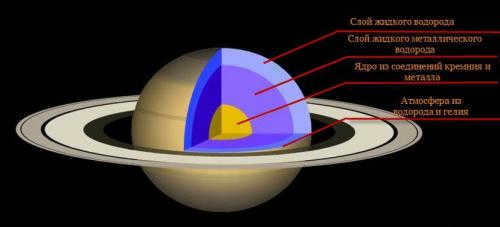
The length of the year for planets in the Earth group. Which planets are a part of the Earth group?
Mercury, Mars, Venus, and Earth are classified as terrestrial planets. They all have relatively small sizes and masses. The density of these planets is significantly higher than that of water. Their rotation speed is relatively slow, and they have a limited number of satellites. Venus and Mercury do not have any satellites, while Earth has one – the moon.
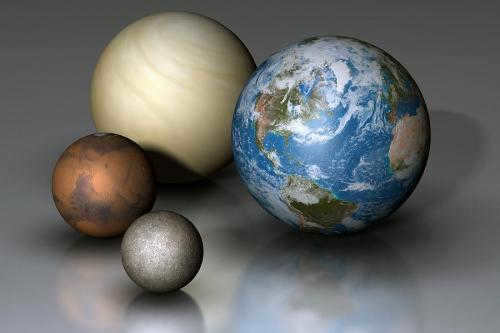
It is conceivable that both the small and faraway Pluto possess physical characteristics that can be attributed to the planets within the same category. With a diameter exceeding 1200 kilometers, Pluto is only half the size of its own satellite, Charon. This suggests that Pluto and Charon, much like the relationship between Earth and the Moon, can be classified as a “double planet”.
In the field of astronomy, there are various definitions for the duration of a year.
- Stellar, also known as sideric year, refers to the time it takes for a complete revolution around the Sun.
- Solar, or tropical year, represents the period during which the Sun goes through a full cycle of seasons.
Regardless of the method used to measure it – whether it’s in relation to the Sun or the stars – a Martian year is longer than an Earth year due to disparities in speed and orbital length. The length of a year is typically measured in days. Hence, a year on Mars lasts for 686.98 days, while an Earth year is approximately 365.26 days, making it almost half as long. The tropical period on Earth is about 365.24 days, which is also roughly half the duration on Mars.
The solar year for both planets is 20 minutes shorter than the sidereal year due to the Sun reaching the vernal equinox point before completing a full revolution around the axis. The equinox day provides the most accurate measurement and is typically used as the reference point. Altering the observation conditions will result in a change in the year’s length. The unique orbital motion characteristics initially contribute to an unstable duration, with these variations being slightly larger than those of Earth.
Mars, just like Earth, experiences a year. However, due to its larger elliptical orbit, the length of seasons on Mars is approximately the same as on Earth. The center of Mars’ orbit is significantly displaced from the Sun, causing the planet to behave differently compared to Earth. When Mars is closer to the Sun, it moves faster, and when it is farther away, it moves slower. As a result, the duration of seasons on Mars varies. In the northern hemisphere, the shortest winter lasts for 4 months, while spring, which occurs when Mars is at a more distant position, stretches for 7 Earth months or 193 Martian sols. In the southern hemisphere, the difference between seasons is much smaller.
If we convert Martian time to standard Earth calendar months, it would be equivalent to 22 months and 18 days. This is approximately 98 weeks on Earth. In comparison, on Earth, the same time period is equal to 12 months and 52 weeks.
Planets in the Solar System: How Many Are There?
As we learned in school, the solar system consists of eight planets: Mercury, Venus, Earth, Mars, Jupiter, Saturn, Uranus, and Neptune. I won’t delve into the details of each planet, assuming that this basic knowledge is common to all.
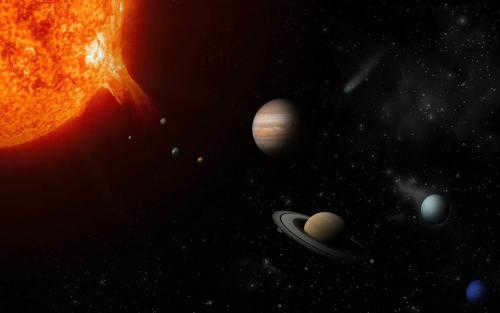
Unspoken Celestial Bodies
Let’s discuss other entities. Take, for example, Pluto.
Pluto is classified as a dwarf planet. It used to be considered a full-fledged planet until 2006, when it was redefined and stripped of that designation. Another interesting aspect is its companion, Charon. Charon possesses a significant amount of mass relative to Pluto, causing the center of gravity to lie outside the plane of any object. Consequently, they can be classified as a binary system of dwarf planets. These fascinating entities reside within our solar system!
It’s worth noting that Pluto is not the largest dwarf planet within our solar system!
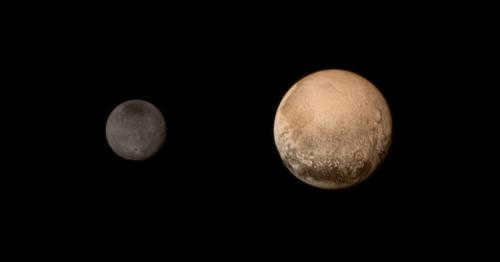
Charon (left) and Pluto (right).
There is a belief that there is an additional planet, which has an extremely elongated orbit. This planet is positioned 20 times farther away from Neptune and allegedly has a mass that is 9 times greater than Earth. Some scientists are 90% certain of its existence. They assert that it takes approximately 10,000 years for this planet to complete one revolution around the Sun, so it has not yet become visible to us.
Not too distant from here, there is also another dwarf planet called Ceres. It is situated within the asteroid belt and has a diameter that is slightly less than 1000 km.
Trans-Neptunian celestial bodies
There exists a region beyond Neptune known as the Kuiper belt. This region primarily consists of small celestial bodies that have been present since the formation of the solar system. However, it also includes a few celestial bodies that are sufficiently large to be classified as dwarf planets. (Quavar, Varuna, and Ork)
Among the trans-Neptunian celestial bodies is Pluto, as it is situated at a greater distance from the Sun than Neptune.
Haumea is another dwarf planet within this region. It is primarily composed of ice and follows an elongated elliptical orbit.
Makemake, which was only named in 2008, is also a dwarf planet and is the second most prominent celestial body within the Kuiper belt after Pluto.
Located further out in the Kuiper Belt lies a diffuse disk. One notable entity within this disk is Erida, which is 5% larger than Pluto, making it the largest dwarf planet. The identification of Erida revolutionized our understanding of planets, subsequently leading to Pluto losing its planetary status.
Continuing further out towards the boundaries of the heliosphere, we encounter another trans-Neptunian object called Sedna, which was discovered in 2003. Similar to Pluto in its reddish appearance, Sedna is also a dwarf planet with an incredibly elongated orbit, completing one revolution around the Sun every 11,500 years.
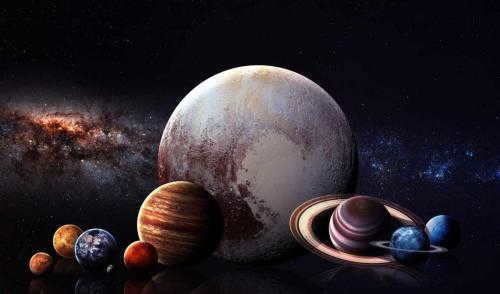

For those intrigued by space, I highly recommend an engaging game called Universe Sandbox 2.
To summarize, the solar system consists of 4 terrestrial planets, 4 gas giants, and a minimum of 10 dwarf planets!
Even our familiar and comprehendible solar system can be quite intricate. This once again emphasizes the need to approach the exploration of our surroundings responsibly and pay attention to even the simplest aspects. Don’t forget to rate the article and also check out the channel where you’ll find plenty of other fascinating content!
What is the planet that has a day equal to a year? It is Pluto, Venus, and Jupiter. Check out the content of the document “Astronomy test: Giant Planets.”
The solar system is home to giant planets.
1. Giant Planets. What are they also known as?
A) They have high density and are composed of oxygen and heavy elements.
B) They have low to medium density and are made up of hydrogen and other gases.
C) They have low and medium density and are made up of gases and heavy elements.
3. How many satellites do giant planets have?
A) Jupiter has 67, Saturn has 62, Uranus has 27, Neptune has 14+.
B) Jupiter has -16, Saturn has 17, Uranus has 16, Neptune has 8.
C) Jupiter-1, Saturn-2, Uranus-3, Neptune-4.
4. How are the giant planets arranged in order and direction from the Sun?
To celebrate Cosmonautics Day, we have examined the most frequently asked questions about space and created visual responses for them. Our analysis was based on the search rankings in Yandex over the past year, focusing on queries containing the phrase “on what planet”.
Unsurprisingly, the majority of online users are curious about the existence of life on planets other than Earth.

Out of all the celestial objects that have been studied, scientists have identified only five planets that could potentially support life. One of these planets, Kepler 62e, is considered to be the most promising candidate. It has an Earth-like index of 0.83 out of 1, which is extremely high.
Kepler 62e is completely covered by an ocean with a rocky floor. A year on this planet lasts 122 Earth days. Kepler 62e is also older than Earth, with a lifespan that is one and a half times longer. This hypothetical water world is located 1,200 light years away from our planet. In other words, the light we see from Kepler 62e today is actually from the year 812 on Earth’s calendar.
The second most commonly asked question is “Which planet has the highest temperature?”.
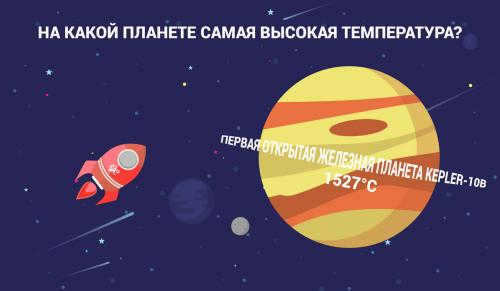
When it comes to the planets that have been discovered, Kepler-10b stands out with the highest temperature. This exoplanet was found by the Kepler telescope and it’s 1.4 times the size of Earth. What’s interesting about Kepler-10b is that it’s the first planet made of iron to be discovered. The incredibly high surface temperature, reaching around 1527°C, causes the iron on the planet to be in a liquid form.
Interestingly, one of the top questions about planets that users ask on Yandex is:
“Which planets did the Little Prince visit?”.

The Little Prince explored a total of seven planets. The first planet he encountered was ruled by a king. On the second planet, he met an ambitious man. The third planet was inhabited by a drunkard. The fourth planet was home to a businessman. The fifth planet was occupied by a lantern man. On the sixth planet, there lived a geographer. Finally, the Little Prince arrived on Earth, which was the seventh planet he visited.
“…a planet that is very challenging! To give you an idea, it is inhabited by one hundred and eleven kings, seven thousand geographers, nine hundred thousand businessmen, seven and a half million drunkards, and three hundred and eleven million ambitious people, making a total of approximately two billion adults.”
It is also fascinating to know which planets humans have actually visited.

Unfortunately, there is not much to be happy about in this regard. Currently, we can confidently state that humans have only set foot on one planet and one moon – Earth and the Moon. However, there is a high probability that Mars will be the second planet that humans will explore.
The top five is completed by an interesting question:
Which planet in our solar system has the longest orbital period?

It’s quite fascinating! Pluto, the furthest planet from the Sun, holds the record for having the longest year. When compared to Earth’s year, the difference is staggering – one year on Pluto is equivalent to 248 years on Earth. That’s almost 2.5 centuries.
Another intriguing question that many people have is which planet was inhabited by the ghosts from Gianni Rodari’s enchanting tale, “These Poor Ghosts”.

It was quite surprising to us as well. Has the act of rereading books become unfashionable?
Certainly, the spirits resided on the planet called “Borth”.
“Resided”? No, it would be more accurate to say – leading a pitiful existence, barely making ends meet. They dwelled, like all spirits, wherever they had to – in caves, in ancient crumbling castles, in vacant, deserted houses, in attics…But the inhabitants of Borth were not afraid of them at all. They were intelligent individuals. They did not believe in spirits.
A lot of people are curious about which planet boasts the highest mountains.


The longest year in the solar system is found on Saturn. It takes approximately 29.5 Earth years for Saturn to complete one orbit around the sun. This is due to its distance from the sun and its slow rotation. In comparison, Earth takes about 365.25 days to orbit the sun.
Mount Olympus on Mars holds the title for the highest mountain in the solar system. Standing at a staggering height of 27 kilometers, it towers over the surrounding plains. To put this into perspective, Earth’s highest volcano, Mauna Kea, is only about 10.4 kilometers tall, making Mount Olympus more than 2.6 times taller.
Many planets in our solar system have atmospheres. Some of the notable ones include Earth, Mars, Venus, and Jupiter. These atmospheres play a crucial role in regulating the temperatures and supporting life on these planets.

While not all planets in the solar system have atmospheres, eight out of the nine planets and three out of the sixty-three satellites do. Each planet and satellite has its own unique chemical composition and weather patterns. However, there is one exception – Mercury, which has almost no atmosphere.
How Long Does One Year on Uranus Last: A Simple Explanation for Kids
The synodic period of Uranus is 369.7 days. But how does that compare to a year on Earth? Let’s find out!
First, let’s understand what a synodic period means. It is the time it takes for a planet to complete one orbit around the Sun and return to the same alignment with Earth. In other words, it is the time it takes for us to see Uranus go through a full cycle of phases, just like the Moon.
Now, let’s convert the synodic period of Uranus into Earth years. To do this, we divide 369.7 days by the number of Earth days in a year, which is approximately 365.25 days. Doing the math, we get:
369.7 days ÷ 365.25 days = 1.012 Earth years
So, one year on Uranus is approximately 1.012 Earth years. That means a year on Uranus is a little longer than a year on Earth!
It’s important to note that this calculation is an approximation, as the actual length of a year on Uranus can vary slightly due to its elliptical orbit and other factors. But this simple explanation should give you a good understanding of how long a year on Uranus lasts.
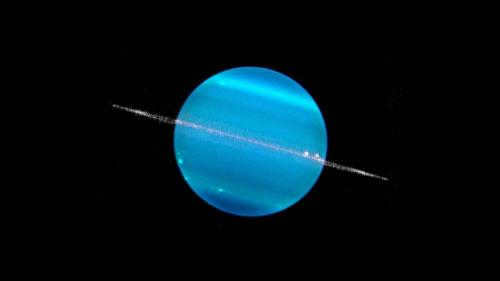
– A simple explanation for kids: how long it takes for Uranus to orbit the Sun, the length of a year compared to Earth, Mercury, and Venus, and the speed of its motion.
We will explain to children how long a year lasts on Uranus using simple language. This information will be helpful for kids and their parents.
It’s no secret that on Earth, a year (the time it takes for our planet to orbit the Sun) usually lasts 365 days (366 every four years due to the extra day in February). But what about Uranus? How long does it take for a year to pass on this distant planet?
To add more excitement, it can be mentioned that there are planets where the length of the day exceeds that of the year! It is important to note that Earth has 24 hours in a day, during which it completes one rotation on its axis. This rotation takes 243 Earth days to complete, while its orbit around the Sun takes 225 days. Therefore, the day on this planet is longer than a year!
On Uranus, the day lasts for 18 hours, but the year is longer compared to Earth. This means that Uranus is spinning rapidly on its axis and slowing down in its orbit.
However, there is another aspect that sets us apart. Take for instance the case of gravity. If one were to stand on a planet (although it is challenging as it is composed of gas), the gravitational force would be 89% of Earth’s strength. So if someone weighs 100 kg, their weight on Uranus would be “lightened” to 89 kg. On the Moon, the gravity is even lower at 83%. This is why astronauts were able to bounce so remarkably high on the lunar surface.
For over a decade, the instruments aboard the Cassini spacecraft have tirelessly worked to determine the precise rotational speed of Saturn.
Like Love Haha Wow Sad Angry
For over a decade, scientists aboard the Cassini spacecraft have been conducting experiments to determine the precise rotation rate of the planet Saturn. As Cassini enters its final year of the mission, it will venture into unexplored regions of the gas giant, offering a unique opportunity to finally answer the long-standing question: how long is a day on Saturn?
In the past, Michelle Daugherty, the principal investigator for the magnetometer (MAG) on Cassini, compared the task of measuring Saturn’s day to finding a needle in a haystack. However, her perspective has shifted. “It’s more akin to searching for multiple needles that constantly change color and shape in an unpredictable manner,” Michelle explained.
If an individual in outer space or on another celestial body within our solar system were to select a unique characteristic on the Earth’s surface, such as the island of Madagascar, take note of its location, and start a stopwatch, it would take approximately 23,934 hours for Madagascar to return to its original position. This duration represents the Earth’s rotation rate, also known as a day.
Applying this same principle, inhabitants of Earth have been able to ascertain the rotation rates of other planets. For instance, a day on Mercury spans roughly two Earth months, while a day on Mars lasts for 24,623 Earth hours. However, this approach does not yield equally accurate results for all planets.
When a planet possesses an expanse of dense atmosphere extending for thousands of kilometers above its surface, it encounters the challenge of coordinating its rotational speed. The swirling bands of clouds on a gaseous planet, such as Saturn or Jupiter, exhibit varying velocities, rendering it impracticable to employ the cloud formations as a means of gauging the planet’s rotation rate. Nevertheless, scientists possess a few advantageous techniques: utilizing the planet’s magnetic field and harnessing radio waves.
Magnetic fields are invisible to the naked eye, but they can be observed using magnetometers and detected through radio antennas. These antennas are able to pick up and analyze the radio emissions emitted by a planet, which occur each time the planet completes a full revolution. It was discovered by scientists shortly after the radio antenna was invented that Jupiter has a day that lasts for 9 hours and 55 minutes. On the other hand, Saturn’s magnetic field is slightly shifted from its axis of rotation, but it spins smoothly without any oscillations.
The MAG instrument on the Cassini spacecraft has identified a signal in Saturn’s magnetic field that resembles a wave in the data. This signal repeats every 10 hours and 47 minutes. However, the periodicity of this signal varies depending on whether one is observing Saturn’s northern or southern hemisphere, and it appears to be influenced by the changing seasons.
Cassini scientists were surprised to find that Saturn’s rotation rate was not as straightforward as they had initially thought. According to Bill Kurth, a member of the Cassini mission team from Iowa State University, they had believed they already knew the rotation rate from previous Voyager measurements. These measurements had suggested that a day on Saturn lasted approximately 10.7 Earth hours. However, the data collected by the Cassini magnetometer showed slightly longer or shorter durations depending on the observed hemisphere of the planet.
The unique nature of Saturn’s rotation rate poses a challenge for scientists. As Michelle Dougherty explained, “Saturn puts us at a disadvantage. Its rotation rate falls somewhere between 10.6 and 10.7 hours, but we cannot be certain if the MAG signal we are observing is directly related to the interior of the planet. All we can observe are changing oscillations that differ between hemispheres and evolve over time.”
In November 2016, the last phase of the Cassini mission is set to commence, as it embarks on 20 orbits in close proximity to Saturn’s primary rings. Subsequently, in April 2017, the spacecraft will initiate a succession of 22 rotations, during which it will venture into uncharted regions situated between the planet’s atmosphere and its inner ring. These maneuvers are expected to provide Cassini with an improved opportunity to observe Saturn’s rotation and ascertain the duration of its day.
The average distance between the Sun and Uranus is approximately 2.88 billion kilometers or 19.2 astronomical units (a.u.). However, due to its elliptical orbit, the distance between Uranus and the Sun can vary. At its closest point, known as the perihelion position, Uranus is about 2.75 billion kilometers or 18.4 a.u. away from the Sun. On the other hand, at its farthest point, known as the aphelion position, Uranus is approximately 3 billion kilometers or 20.1 a.u. away from the Sun.
The distance between Earth and Uranus is in a constant state of flux, as it is influenced by the respective movements of both planets within their orbits. At its closest point, the distance between the two planets is approximately 2.57 billion kilometers, while at its farthest, it stretches to about 3.15 billion kilometers.
Who was responsible for the discovery of Uranus?
Sir William Herschel, a British astronomer, first observed Uranus on March 13, 1781. He recorded his observations in the garden of his home in Somerset, England, and officially announced his discovery on April 26, 1781. Initially, Herschel mistakenly believed that he had discovered a comet rather than a planet.
What is the origin of the name Uranus?
The name Uranus was derived from the Greek mythological figure Uranus, who was the god of the sky.
What is the density of Uranus?
Uranus has a density of 1.27 grams per cubic centimeter, making it the second least dense planet in our solar system.
What is the size of Uranus?
The diameter of Uranus measures 51,118 km, which is more than four times the size of our planet.
How many Earths can fit inside Uranus?
With a total volume of 6.833×10^13 km3, Uranus has enough space to accommodate 63 Earths!
What is the composition of Uranus?
Uranus is the second least dense planet in the solar system, following Saturn. This fact provides insight into its makeup. The planet is composed of frozen methane, ammonia, and water. The exact mass of Uranus’ ice is unknown but is estimated to be between 9.3 and 13.5 times the mass of Earth. The remaining mass of the planet is predominantly hydrogen and helium. Uranus is comprised of three main layers: an inner rocky core, a middle ice mantle, and an outer gaseous layer containing hydrogen and helium.
What is the number of rings around Uranus?
There are a total of 13 known rings encircling Uranus, with sizes ranging from approximately 38,000 km to about 98,000 km in radius. These rings are typically composed of relatively large objects with diameters ranging from 0.2 to 20 meters.
The Composition of Uranus’ Atmosphere
Uranus possesses a distinct atmosphere that consists of three distinctive layers: the troposphere, stratosphere, and thermosphere. This planet’s atmosphere is renowned for being the coldest in our solar system, with temperatures plummeting to as low as -224º C. The lower atmosphere is abundant in volatile substances such as methane, water, and ammonia, while the upper atmosphere is predominantly composed of hydrogen and helium.
Uranus boasts a total of 27 natural satellites. Nevertheless, when compared to the moons of other planets, Uranus’ satellites are the tiniest. The biggest among them is Titania, with a radius measuring 788.9 km, positioning it as the eighth largest satellite within the entire solar system. Satellites are typically comprised of a mixture of rock and ice, with a ratio of approximately 1:1.
What is the temperature on Uranus?
Uranus is one of the coldest planets in our solar system. The temperature near the planet’s cloud tops can reach as low as -216º C. The lowest recorded temperature in the tropopause of Uranus is -224ºC.
Is it possible for Uranus to sustain life?
Determining whether Uranus is capable of supporting life is a challenging task due to the planet’s unique conditions that both facilitate and impede the survival of living organisms. One factor that offers potential for life is the abundance of methane, a crucial biosignature. Additionally, there is a possibility of a liquid water ocean near the planet’s core. However, the unfortunate reality is that the immense pressure at Uranus’ core surpasses the tolerance of any known life form. Furthermore, Uranus possesses the coldest atmosphere in the entire solar system, making it inhospitable for terrestrial life. Nevertheless, it is plausible that extraterrestrial life specially adapted to these extreme conditions could exist.
Mars, also known as the Red Planet, is in close proximity to Earth. It is feasible to observe this celestial neighbor in the night sky without the aid of a telescope.
Mars, a member of the Earth group, is situated as the fourth planet from the Sun. In contrast, the Earth holds the third spot in our solar system.
The crimson planet is our adjacent celestial body.
The designation “red” is mostly attributed to its hue. Its surface’s slightly reddish color is primarily caused by its high concentration of iron oxides. In terms of size relative to Earth, Mars is roughly half as big. The planet’s diameter is approximately half that of Earth.
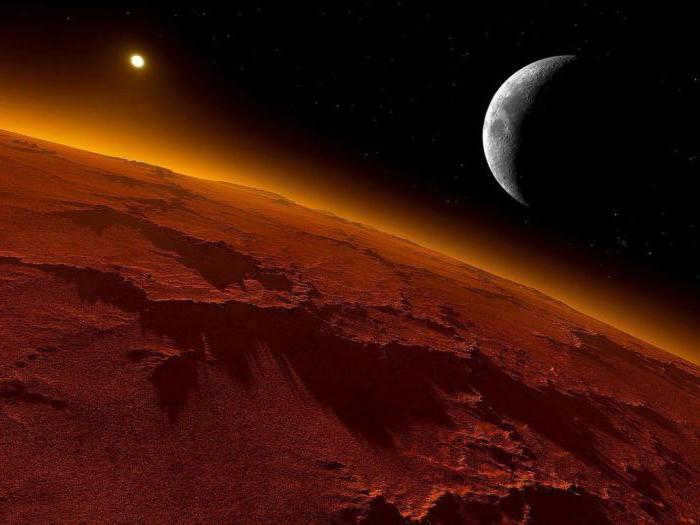
The revolution period of Mars around the Sun is 687 days, which means that a year on Mars is almost twice as long as on Earth.
This is because the distance to Mars is 1.62 times greater than the distance from Earth to the Sun, resulting in a longer revolution period.
How long is a day on Mars? The duration of a day on Mars is relatively similar to Earth’s. Among the planets in our solar system, Mars has the closest day length to Earth.
In terms of duration, a day on Mars is 24 hours and 37 minutes, which slightly exceeds the length of an Earth day. The primary reason for the longer day on Mars is the speed of its rotation around its axis.
Video about the Duration of Day on Planets in Our Solar System
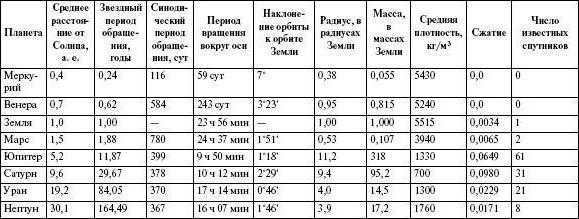
The duration of a day depends on the distance from the Sun and the rotation speed of each planet. There are two types of days – stellar and solar. The difference between them is determined by the time it takes for the planet to revolve around the Sun and rotate around its own axis.
Now let’s compare the length of a day and a year on different planets, specifically Mars and Earth.
Mercury, the closest planet to the Sun, has a sidereal day of 59 Earth days and a solar day of about 176 days.
Venus, on the other hand, rotates in the opposite direction, resulting in a stellar day of 223 Earth days and a solar day of 117 days.
The Earth experiences a solar day lasting 24 hours, while the sidereal day is slightly shorter at 23 hours and 56 minutes.
On Mars, the duration of both the stellar and solar days is similar to that on Earth, at 24 hours and 37 minutes and 24 hours and 40 minutes, respectively. This means that a day on Mars lasts 24 hours and 40 minutes.
When it comes to the gas giant planets, Jupiter has a day that is almost ten hours long, Saturn’s day is approximately 10 hours and 34 minutes, Neptune’s day is around 16 hours, and Uranus has a day lasting 17 hours and 15 minutes. The difference between the solar and sidereal days on these planets is negligible due to their long orbital periods around the Sun.
From this, we can conclude that Mars is the planet most similar to Earth in terms of day duration.
Similar to our planet, a day on Mars is four minutes longer than a sidereal day.
A day on Mars is equivalent to a day on Earth
In 2023, there are plans for an expedition to Mars. Unlike traditional probes that explore the planet, this time humans will be on board the spacecraft.
This mission is quite complex due to the challenging conditions for human habitation on Mars, where walking outside without protective gear is impossible.
One of the concerns regarding the adaptation of future Martian inhabitants is how their bodies will react to the longer Martian day compared to Earth’s conditions.
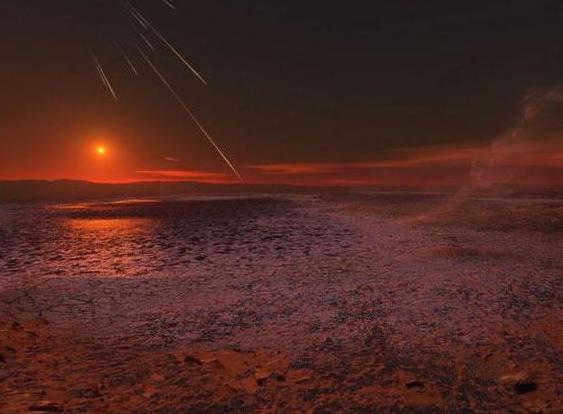
Is there going to be a complete biological adaptation? Physiologists believe that such a slight difference of 37 minutes will be easily adjusted to by the colonizers.
There will be many challenges, but perhaps, in spite of that, a day on Mars, which is so similar to ours, will remind astronauts of their home. It is not without reason that the Red Planet is referred to as Earth’s twin. It shares many similarities, but its habitability is minimal.
To protect the settlers from the high levels of radiation, residential complexes specially designed to withstand the harsh conditions are planned to be built.
Mars has a practically non-existent atmosphere, with increased rarity. The planet’s air is mainly composed of carbon dioxide.
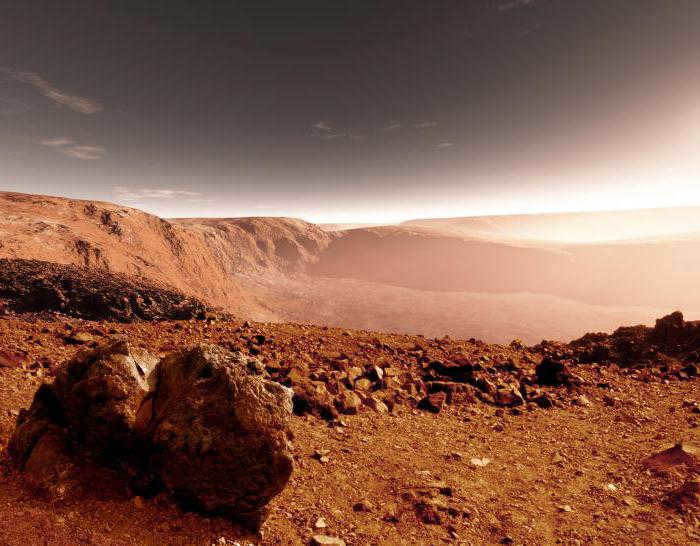
At the poles, the temperature on Mars can drop to as low as -120 degrees Celsius. It is noteworthy that the angle of inclination on Mars is similar to that of Earth, which is approximately 25 degrees.
As a result, the change of seasons on Mars is comparable to the familiar local conditions on Earth. However, the Martian year is almost twice as long as a year on Earth, lasting approximately 687 days.
Considering the duration of a Martian day and the total number of days in a Martian year, it can be calculated that the first settlers on Mars will witness the Sun rising and setting approximately 668 times during a Martian year.
The Future’s Astronauts
In relation to this matter, the mission’s organizers and scientists face another challenge, which is almost technically resolved. It concerns the synchronization of our time with that of Mars. The scientific term “Sol” denotes a day on Mars or its duration.
This is how the future inhabitants of Mars will call their day and state that two or three sols have passed. Let us hope that this monumental mission will be successful and usher in a new era of interplanetary exploration.
Jupiter, the fifth planet from the Sun, is situated between Mars and Saturn. If you consider Earth to be expansive, it pales in comparison to Jupiter, the largest planet in our solar system!
Jupiter has a mass that is 317 times greater than the mass of Earth, and it is 2.5 times the mass of all the other planets combined in our solar system! In terms of volume, you could fit 1300 Earth-sized planets inside Jupiter. The gravity on this colossal planet is 2.5 times stronger than that on Earth. If an individual weighing 100 kg were to stand on Jupiter’s surface, they would weigh a whopping 250 kg there.
Jupiter is the only planet in our solar system that has streaks known as Jupiterian streaks. None of the other gas giants possess these distinctive features! According to a hypothesis, these stripes are a direct result of the impact of Jupiter’s moons on the planet itself. It is suggested that these moons created elongated formations of gaseous matter that, through rotation, formed the stripes we observe today.
When gazing at the night sky, the celestial body known as Jupiter stands out as the third most luminous object. In our solar system, Venus and the Moon claim the top spots for brightness. However, Jupiter outshines even the most radiant star in the sky, Sirius. By utilizing a set of reliable binoculars or a compact telescope, one can observe Jupiter’s brilliant white disk along with its four prominent satellites.
It is worth noting that Jupiter boasts an impressive total of 63 satellites! Among them, Ganymede reigns as the largest satellite, surpassing even the size of the planet Mercury itself. Additionally, scientists have made the astounding discovery of water existing on Europa, concealed beneath a thick layer of ice. Furthermore, a staggering number of 8 active volcanoes have been detected on the surface of another satellite, Io!
It’s quite incredible, but Jupiter actually possesses 4 rings! The most significant one is the ring that remains after meteorites collided with 4 of its satellites (Thebes, Metida, Adrastea, and Almathea). Unlike the rings of Saturn, Jupiter’s rings do not contain any ice. Recently, scientists have made a fascinating discovery of another ring located closest to the planet, which has been named Halo.
According to calculations by scientists, Jupiter emits 2-3 times more energy than it receives from the Sun. This phenomenon is explained by scientists as a result of the gradual compression of the planet, as well as the potential radioactive decay occurring within Jupiter’s core.
Did you know.
The Great Red Spot, a massive rotating cyclone that has been observed since the 1800s, is visible even through a small telescope. Its size has been reduced by half from 40000 kilometers a century ago. The Great Red Spot, located on the planet Jupiter, holds the title for being the largest atmospheric vortex in the entire solar system! It is so large that it could fit three Earth-sized planets within its length. This enormous storm rotates counterclockwise at an astonishing speed of approximately 435 km/h.
Jupiter, despite its enormous mass, spins on its axis faster than any other planet in our solar system. It completes a full rotation in just 10 hours! This rapid rotation is attributed to the planet’s magnetic field and the radiation surrounding it.
Jupiter possesses the most robust magnetic field within our solar system. It is a staggering 14 times larger than the magnetic field of Earth! Certain astronomers posit that this magnetic field originates from the movement of metallic hydrogen within the planet. Remarkably, at the extreme temperatures and pressures found inside Jupiter, hydrogen transforms into a liquid state rather than a gaseous one. Furthermore, this liquid hydrogen acts as an electrical conductor, giving rise to the electric currents that generate Jupiter’s magnetic field.
Another peculiar characteristic of Jupiter is the occurrence of “hot shadows”. Typically, the temperature in shadows is lower than that of the surrounding area. However, this is not the case on Jupiter! On this celestial body, wherever the shadow of its satellites falls upon the surface, the temperature is actually higher than in the exposed regions.
Many people take time on Earth for granted without realizing that the measurement of time is relative. The duration of a day and a year is based on physical factors, such as the distance between the planet and the Sun. For instance, one year is the time it takes for a planet to complete its orbit around the Sun, while one day is the time it takes for a planet to complete a full rotation on its axis. This principle is applied to determine the duration of a day on other celestial bodies in the solar system. Curious about the length of a day on Mars, Venus, and other planets?
On Earth, a day lasts for 24 hours, which is the time it takes for the planet to make one full rotation on its axis. However, the length of a day varies on Mars and other planets. Some planets have shorter days, while others have significantly longer days.
Calculation of Martian Day Duration
In order to determine the length of a day on Mars, one can utilize either a solar day or a sidereal day. The latter refers to the time it takes for the planet to complete one full rotation on its axis. A day is measured by the amount of time it takes for the stars in the sky to return to their original position. On Earth, a sidereal day is approximately 23 hours and 57 minutes.
A solar day, on the other hand, is the duration it takes for a planet to complete one full rotation on its axis in relation to sunlight. The method of measurement for a solar day is similar to that of a sidereal day, except the Sun is used as the point of reference. It’s important to note that a sidereal day and a solar day can vary in length.
What is the duration of a day on Mars, both according to the sidereal and solar systems? On the red planet, a sidereal day lasts for 24 and a half hours, while a solar day is slightly longer at 24 hours and 40 minutes. This means that a day on Mars is 2.7% longer than a day on Earth.
When it comes to exploring Mars, the time on the planet is taken into consideration. The vehicles sent to Mars are equipped with special clocks that are adjusted to the Martian day, which differs from Earth’s day by 2.7%. This synchronization is crucial for the functioning of the rovers, as they rely on solar panels for power. Although an experiment was conducted to develop a clock that aligns with the solar day on Mars, it was not successfully implemented.
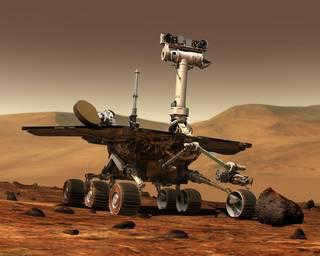
Martian time
By understanding the length of a Martian day, one can determine the duration of a Martian year. The Martian seasonal cycle is comparable to that of Earth, as Mars has a similar tilt (25.19°) in relation to its orbital plane. The distance between the Sun and the red planet varies between 206 and 249 million kilometers at different intervals.
Temperature measurements on Mars deviate from those on Earth:
- The average temperature is -46 °C.
- During the period of Martian distance from the Sun, the temperature drops to around -143 °C.
- In the summertime, the temperature reaches -35 °C.
Water on Mars
In 2008, scientists made an intriguing finding. The Mars rover uncovered the presence of water ice at the planet’s poles. Prior to this discovery, it was widely believed that only carbon dioxide ice existed on the surface. Subsequently, it was discovered that precipitation in the form of snow occurs on the red planet, with carbon dioxide snow falling near the south pole.
Throughout the year, Mars experiences storms that can spread across hundreds of thousands of kilometers. These storms make it challenging to monitor surface conditions on the planet.
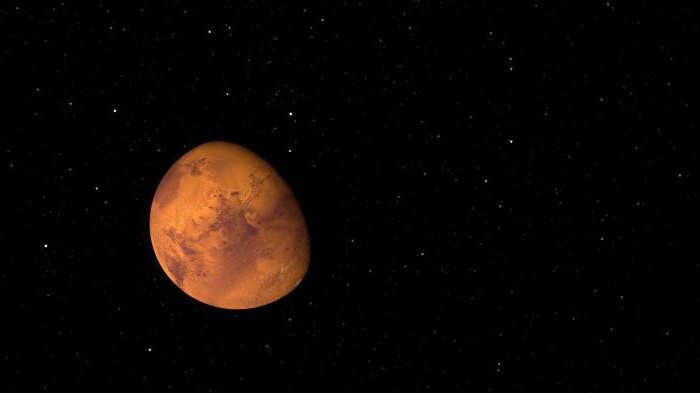
A Marsian year
When it comes to Mars, its year is a complete circle around the Sun in 686 Earth days, with a velocity of 24 thousand kilometers per second. Scientists have developed a whole system to measure Martian years.
When exploring the duration of a day on Mars in hours, researchers have made numerous groundbreaking discoveries. These findings indicate the close resemblance between the red planet and Earth.
The duration of a year on Mercury
Mercury, which is located near the Sun, completes one rotation on its axis in 58 days on Earth. In other words, a single day on Mercury is equivalent to 58 Earth days. Additionally, it takes Mercury only 88 Earth days to orbit the Sun. This astounding revelation indicates that a year on this planet lasts nearly three Earth months. Furthermore, while our planet completes one orbit around the Sun, Mercury completes over four rotations. It is truly remarkable to note that in just one and a half Martian days, an entire year elapses on Mercury.
Venus is a planet with unique time patterns. A single day on Venus is equal to a whopping 243 Earth days, while a full year on this planet lasts only 224 Earth days. This peculiar time system adds to the enigmatic nature of Venus.
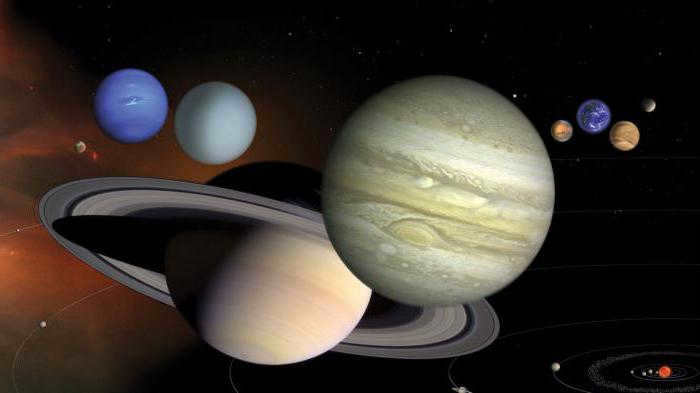
Duration of a Day on Jupiter
Jupiter, the largest planet in our solar system, is often believed to have a long day due to its size. However, this is not the case. A day on Jupiter lasts only 9 hours and 55 minutes, which is less than half the duration of a day on Earth. The rapid rotation of this gas giant is responsible for the constant presence of hurricanes and powerful storms on the planet.
Time on Saturn
A day on Saturn is equivalent to the length of a day on Jupiter, which is 10 hours and 33 minutes. However, a year on Saturn is much longer, lasting approximately 29345 Earth years.
Time on Uranus
Uranus is a unique planet, making it challenging to determine the duration of a day on its surface. A sidereal day on Uranus lasts for 17 hours and 14 minutes. However, due to its significant axial tilt, the planet orbits the Sun in an almost sideways manner. This results in one pole experiencing a 42-year-long summer while the other pole remains in darkness. As Uranus rotates, the illuminated pole switches, leading to a day on Uranus lasting 84 Earth years, which is equivalent to one Uranian year.
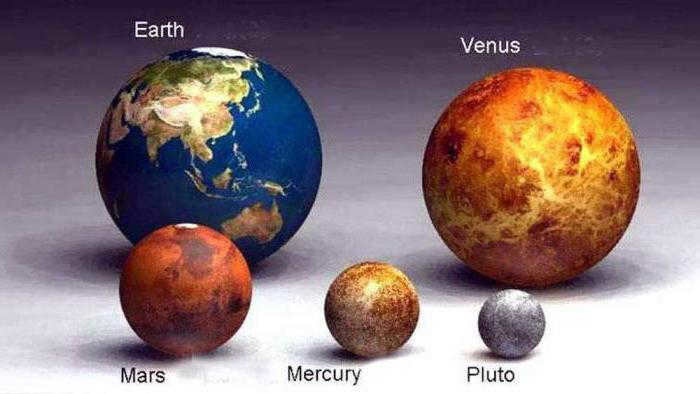
Time on different planets
When considering how long a day and a year last on Mars and other planets, scientists have made an intriguing discovery – an exoplanet called Kepler 78b has a year that only lasts for 8.5 Earth hours. There is also another planet, KOI 1843.03, which has an even shorter rotation period around its sun, lasting only 4.25 Earth hours. If humans were to live on either of these planets, they would age three years every day. However, if humans were able to adapt to the planetary year, the most fascinating destination would be Pluto. On this dwarf planet, a year lasts for 248.59 Earth years.
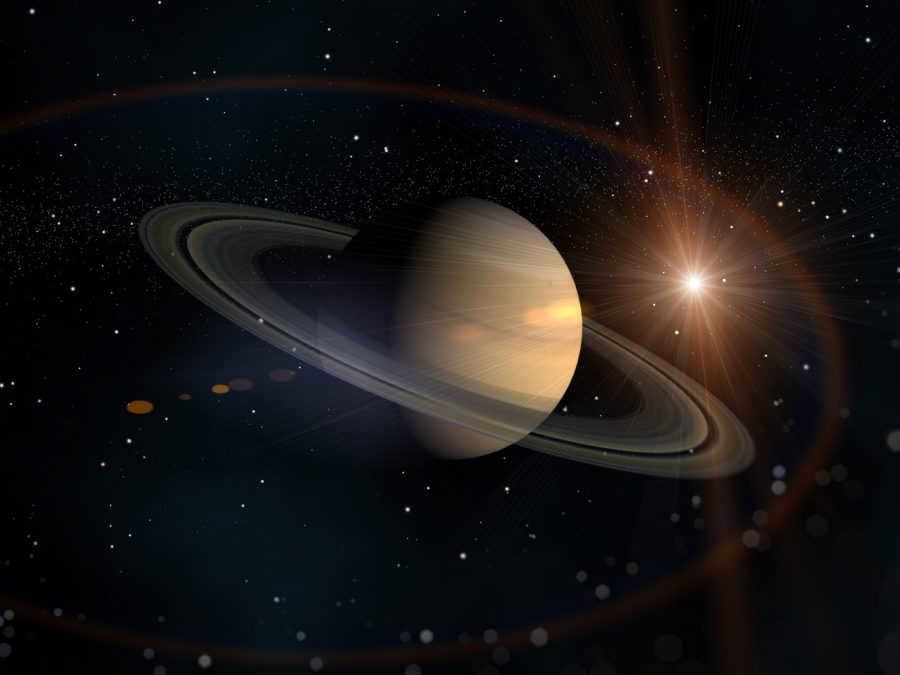
- Celestial Bodies
Saturn, the celestial body that comes second in size within the solar system, is most famous for its prominent rings. This gas giant is frequently observed by astronomers, and its characteristics contribute to a deeper understanding of the cosmos’ structure. Saturn has been extensively researched and detailed information about it is readily available to anyone.
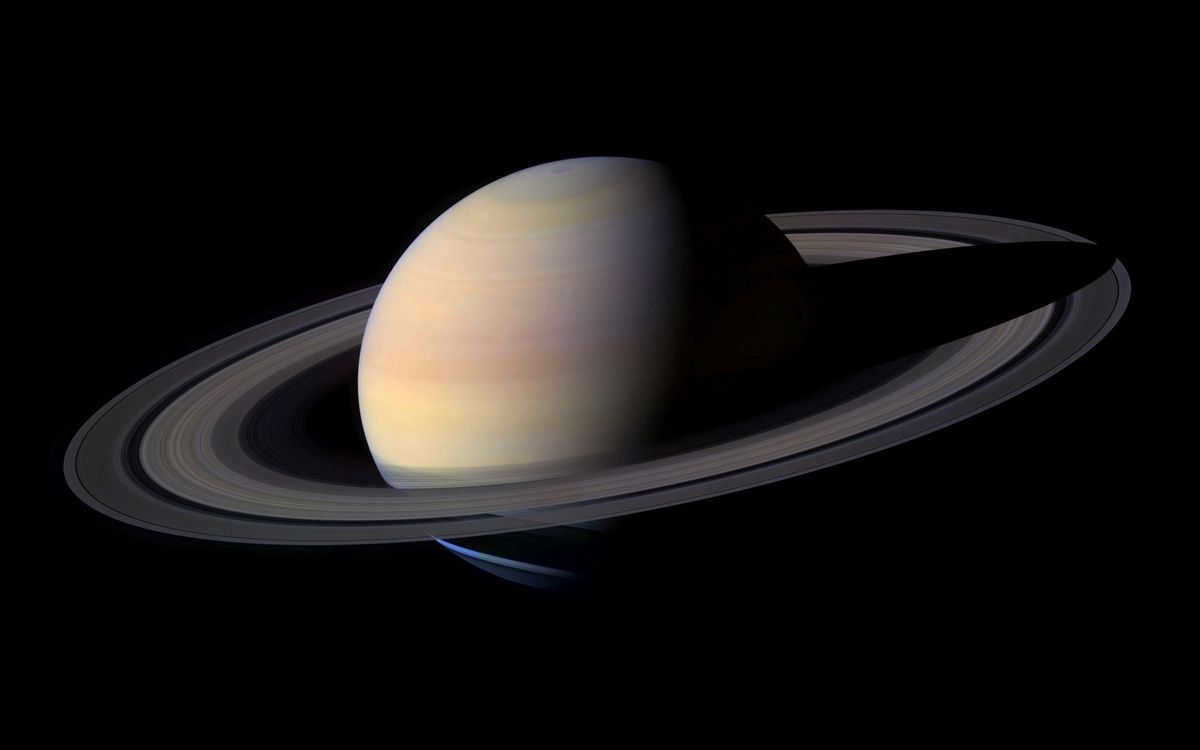
Saturn boasts an impressive size: it has an equatorial diameter of 120,536 km and a polar diameter of 108,728 km. Its surface area is 4.27 * 1010 square kilometers and its volume is 8.27 * 1014 cubic kilometers.
Fascinating fact: Saturn’s dimensions surpass those of Earth by the following factors: radius by 9.3, area by 82, volume by 765, and mass by 95.
The gas giant is located at an average distance of 1.4 billion kilometers from the Sun. During its complete orbit around the star, the maximum distance increases to 1,513,783,000 km, while the minimum distance decreases to -1,353,500,000 km. Saturn rotates at a speed of 9.69 km/s, although this velocity can vary depending on its position in space. A year on Saturn lasts 10,759 days, which is 29.5 times longer than on Earth.
Composition and surface
The composition and surface of an object refer to its physical properties and characteristics. These aspects are important in various fields, including materials science, chemistry, and geology.
When we talk about the composition of an object, we are referring to the elements and compounds that make up its structure. For example, a rock may be composed of minerals such as quartz, feldspar, and mica. The composition of an object can have a significant impact on its properties and behavior. Different compositions can result in different hardness, density, and reactivity.
The surface of an object refers to the outermost layer or boundary that separates it from the surrounding environment. This surface can be smooth, rough, porous, or have other textures and features. The surface can also be chemically reactive, interacting with the surrounding environment. For example, metals may undergo oxidation when exposed to air, resulting in the formation of a protective layer of oxide on the surface.
Understanding the composition and surface of an object is crucial in many applications. In materials science, it helps in designing and selecting materials with desired properties for specific applications. In chemistry, it is important for studying chemical reactions and interactions. In geology, it helps in identifying and classifying rocks and minerals.
Overall, the composition and surface of an object provide valuable information about its physical properties and behavior. By studying and analyzing these aspects, scientists and researchers can gain insights into the nature and characteristics of different materials and substances.
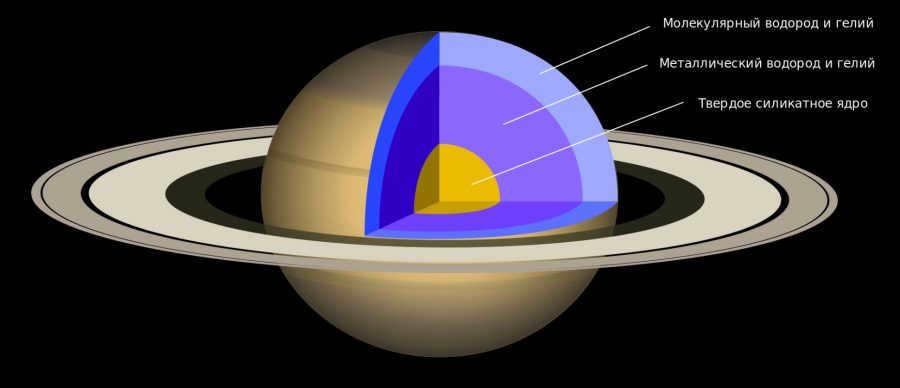
Due to the fact that Saturn is a gas giant, the density of its surface is relatively low, measuring only 0.687 g/cc. It is primarily comprised of molecular hydrogen in a gaseous state, which is saturated with helium.
An intriguing fact: because of Saturn’s low density, if it were placed in water, it would not sink.
Beneath the outer layer of the planet lies a layer of metallic hydrogen and helium in a liquid state. This layer also contains trace amounts of volatile substances, although scientists have yet to determine their exact composition. At the core of Saturn is a solid sphere with a radius of 12,500 km, which possesses an uneven surface. It is intensely heated to a temperature of 11,700 degrees Celsius and its composition may bear similarities to that of Earth.
As a result of the extreme temperatures, the helium in the core becomes heated and starts to ascend towards the upper layer, creating a continuous upward flow. This process leads to the giant’s surface absorbing a significant amount of energy, surpassing the energy received from the Sun by two and a half times.
The atmospheric conditions of Saturn

The chemical composition of Saturn’s atmosphere consists mainly of hydrogen (approximately 96%) and helium (approximately 4%). It also contains trace amounts of other elements such as ammonia, acetylene, ethane, phosphine, and methane. The atmosphere has a thickness of approximately 60 kilometers. The highest layer of the atmosphere experiences wind speeds of up to 1800 kilometers per hour, making Saturn’s winds some of the fastest in the entire solar system.
Saturn also possesses cloud formations in the shape of horizontal bands, although this feature is not as prominent as it is on Jupiter. As one approaches the equator, these bands become significantly wider compared to those near the poles and even wider than the bands found near Jupiter’s equator. Prior to the Voyager mission’s launch in the 1970s, scientists had no knowledge whatsoever regarding the existence of these bands. Nowadays, even individuals with a telescope of adequate magnification can observe them from Earth.
One more captivating phenomenon present in the atmosphere of Saturn is the occurrence of sizable white patches. These are tempests that manifest on Saturn and bear resemblance to the Great Red Spot on Jupiter, but their lifespan is considerably shorter. This is the kind of tempest that was detected in 1990 by the Hubble Space Telescope. Past observations suggest that these tempests appear periodically, approximately once per revolution of Saturn in its orbit.
Saturn’s composition is thought to closely resemble that of Jupiter, and it can be divided into three distinct layers. The innermost layer is a solid core, which is estimated to be 10 to 20 times more massive than the Earth. This core is thought to be surrounded by a layer of liquid metallic hydrogen. The outermost layer is comprised of molecular hydrogen (H2). The primary difference between the structures of Saturn and Jupiter lies in the thickness of their respective outer layers. Jupiter has a metallic hydrogen layer that spans 46,000 km and a molecular hydrogen layer that measures 12,200 km in thickness, whereas Saturn’s outer layers are 14,500 km and 18,500 km thick, respectively.
Saturn, similar to Jupiter, releases approximately 2.5 times more radiation than it obtains from the Sun. This phenomenon is attributed to the Kelvin-Helmholtz mechanism, which states that energy is produced by the gravitational compression of the planet and its massive size. Nevertheless, unlike Jupiter, the overall amount of emitted energy cannot be accounted for solely by this mechanism. Instead, researchers have postulated that the planet generates extra heat through the friction of helium currents.
One distinctive characteristic of Saturn is its status as the least dense planet in the entire solar system. Despite having a solid and dense core, the planet’s outer gaseous layer significantly contributes to its overall average density, which is only 687 kg/m3. Consequently, Saturn’s density is actually lower than that of water, and if it were scaled down to the size of a matchbox, it would effortlessly float atop the gentle current of a spring stream.
The orbit and rotation of Saturn
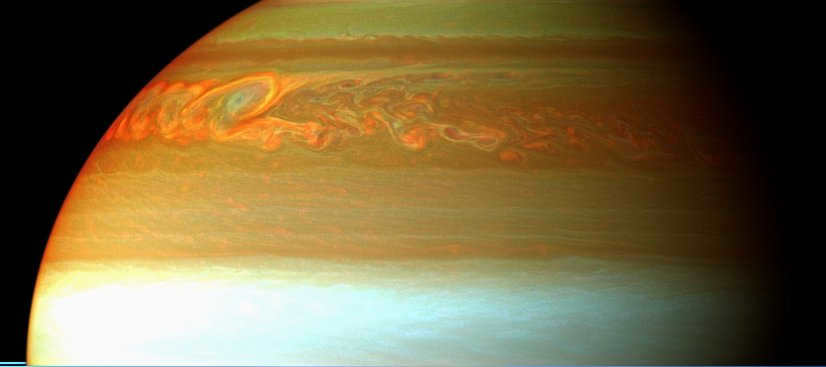
Saturn is located at an average distance of 1.43 x 109 km from the Sun, making it approximately 9.5 times farther away from the Sun than the Earth. This vast distance means that it takes approximately one hour and twenty minutes for sunlight to reach the planet. Furthermore, due to its distance from the Sun, Saturn has a year that lasts about 10.756 Earth days, which is equivalent to approximately 29.5 Earth years.
When it comes to the eccentricity of Saturn’s orbit, it ranks as the third largest after Mercury and Mars. This large eccentricity results in a significant difference in distance between the planet’s perihelion (1.35 X 109 km) and aphelion (1.50 X 109 km), which is approximately 1.54 X 108 km.
The angle of Saturn’s axis is 26.73 degrees, which is quite similar to Earth’s. This similarity is the reason why Saturn experiences seasons just like Earth does. However, due to its distance from the Sun, Saturn receives significantly less sunlight throughout the year. As a result, the seasons on Saturn are much less distinct compared to those on Earth.
Discussing Saturn’s rotation is just as fascinating as discussing Jupiter’s rotation. Saturn has a rotation period of approximately 10 hours and 45 minutes, making it the second fastest rotating planet in our solar system, after Jupiter. This rapid rotation greatly impacts the planet’s shape, causing it to have a slightly bulging appearance near the equator, giving it a spheroid shape.
Another unexpected aspect of Saturn’s rotation is the variation in rotation speeds at different latitudes. This occurrence arises from the fact that Saturn is primarily composed of gas rather than solid matter.
Formation of Rings
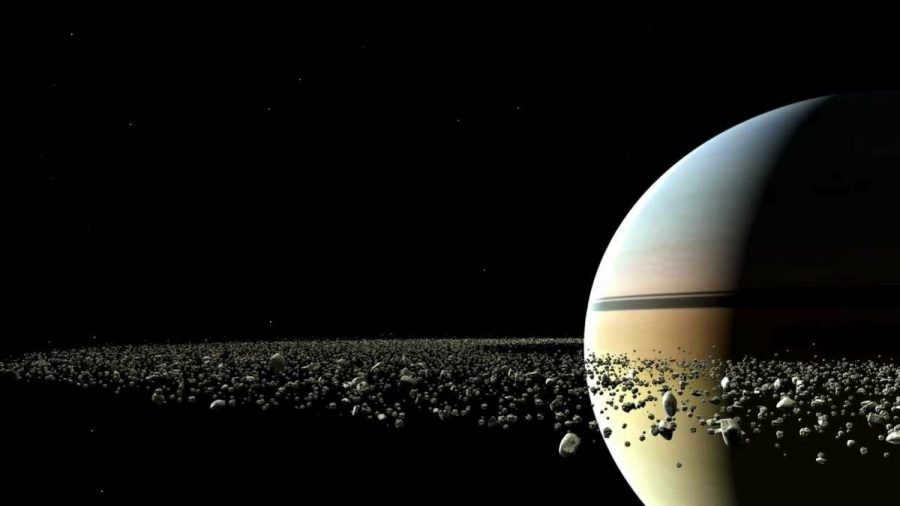
An interesting characteristic of Saturn is its unique ring system. The origin of these rings has been a topic of debate among scientists. According to the conventional theory, the rings are believed to be nearly as ancient as the planet itself, existing for at least 4 billion years. It is speculated that during the early stages of Saturn’s formation, a satellite measuring approximately 300 km in diameter came too close and was ripped apart by the planet’s gravitational forces. Another possibility is that two satellites collided, resulting in the fragmentation of one or both bodies. Alternatively, it is hypothesized that a large comet or asteroid impacted the satellite, causing it to disintegrate while in orbit.
Another theory suggests that the satellite was not destroyed, but rather the rings, along with the planet itself, originated from the solar nebula.
However, there is an issue: the ice found in the rings is exceptionally pure. If the rings had formed with Saturn billions of years ago, we would expect them to be covered in dirt from micrometeorite impacts. Yet, to this day, they appear as clean as if they formed less than 100 million years ago.
It is conceivable that the rings continuously renew their material by clumping together and colliding, which complicates the determination of their age. This is one of the unsolved enigmas.
Satellites
Satellites are objects that orbit around larger celestial bodies, such as planets or moons. They can be natural, like the moon, or artificial, like those launched into space by humans. Satellites play a crucial role in various fields, including communication, navigation, weather forecasting, and scientific research.
Satellites used for communication purposes are known as communication satellites. These satellites are placed in geostationary orbits, which means they remain fixed above a specific location on Earth’s surface. Communication satellites enable us to make phone calls, send messages, and access the internet from anywhere on the planet.
Navigation satellites, on the other hand, are used to determine the precise location of objects on Earth’s surface. Global Navigation Satellite Systems (GNSS) like GPS, GLONASS, and Galileo provide accurate positioning data that is essential for navigation in various industries, including aviation, shipping, and surveying.
Weather satellites are designed to monitor and forecast weather patterns. They collect data on atmospheric conditions, cloud cover, and other meteorological parameters. This information helps meteorologists predict weather patterns, track storms, and issue warnings for severe weather events.
Scientific satellites are used to conduct research and gather data about various scientific phenomena. They are equipped with specialized instruments and sensors to study different aspects of the Earth, solar system, and universe. Scientific satellites have contributed significantly to our understanding of climate change, space exploration, and the origins of the universe.
In conclusion, satellites are essential tools that enable us to communicate, navigate, predict the weather, and conduct scientific research. They have revolutionized various industries and have become an integral part of our modern world.
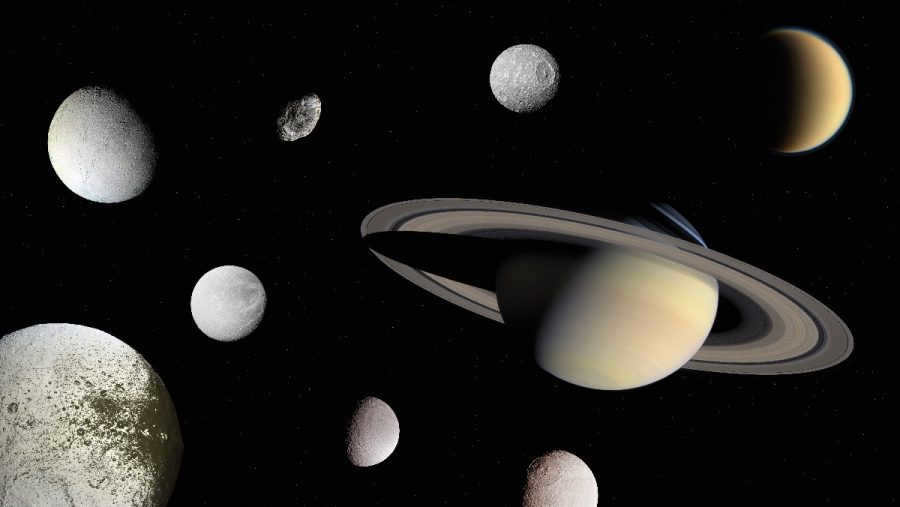

Saturn boasts a total of 62 satellites, with only 5Z having official designations. Among these, Z4-x have diameters smaller than 10 km, while 14 have diameters ranging from 10 to 50 km. However, certain inner satellites can extend up to 250-5000 km.
Most of these satellites are named after the titans from ancient Greek mythology. The innermost moons have relatively small orbital inclinations. On the other hand, the irregular satellites in the more distant regions are situated millions of kilometers away and can complete an orbit in just a few years.
The inner moons consist of Mimas, Enceladus, Tefia, and Dione. They are made up of water ice and may possess a rocky core, icy mantle, and crust. The smallest moon is Mimas, which has a diameter of 396 km and a mass of 0.4 x 1020 kg. It has an egg-like shape and orbits at a distance of 185.59 km from the planet, resulting in an orbital period of 0.9 days.
Enceladus, with dimensions of 504 km and a mass of 1.1 x 1020 kg, has a spherical shape. It takes 1.4 days to complete one orbit around the planet. Despite being one of the smallest spherical moons, Enceladus is geologically active, exhibiting parallel faults in its southern polar latitudes.
Large geysers have been observed in the southern polar region, serving as a source to replenish the E ring. These eruptions are of great importance as they could potentially provide evidence of life on Enceladus, given that the water originates from an underground ocean. Notably, Enceladus has an albedo of 140%, making it one of the most reflective objects in the entire system. Below, you will find captivating photographs showcasing Saturn’s fascinating satellites.
Tefia, with a diameter of 1066 km, is the second largest satellite orbiting Saturn. Its surface is predominantly characterized by craters and hills, with a smaller number of plains. One standout feature is the Odyssey crater, which spans an impressive 400 km. Additionally, there is a system of canyons that stretches for 2000 km, reaching a depth of approximately 5 km and measuring 100 km in width.
The largest moon within Saturn’s system is Dione, measuring 1112 km in diameter and weighing 11 x 1020 kg. Its surface is not only ancient but also extensively damaged due to numerous impacts. Some craters found on Dione are as large as 250 kilometers in diameter. Additionally, there are indications of past geologic activity.
On the other hand, the outer satellites of Saturn are situated beyond the E-ring and consist of a combination of water ice and rock. One such moon is Rhea, which has a diameter of 1527 km and a mass of 2Z x 1020 kg. Rhea orbits at a distance of 527,108 km from Saturn and completes one revolution every 4.5 days. Similar to Dione, Rhea’s surface is also marked with craters, and there are several significant faults on its posterior hemisphere. Notably, Rhea possesses two large impact basins, each measuring approximately 400-500 km in diameter.
The dense atmospheric haze makes it difficult to observe the surface. Only a few features such as crater formations, cryo-volcanoes, and longitudinal dunes are visible. Titan, located 1,221,870 kilometers away, stands out in the system as the only body with methane-ethane lakes. Scientists believe that it may also have an underground ocean. It takes 16 days to complete a full orbit around the planet.
Hyperion, the neighbor of Titan, is the second largest moon in terms of size and mass, after Mimas. With a diameter of 270 km, it has an irregular egg-like shape and a surface covered in craters ranging from 2 to 10 km in diameter. Its rotation is unpredictable.
Spanning 1470 km and weighing 1.8 x 1020 kg, Hyperion is the most distant moon, located at a distance of 560,820 km from its planet. It takes 79 days for Hyperion to complete its orbit. One side of Hyperion is darker and the other side is lighter, giving it a yin and yang appearance.
Next up are the irregular moons. These moons are small and have orbits that go in the opposite direction of their planet’s rotation. They can be categorized into three groups: Inuit, Gallic, and Norwegian.
The Inuit group consists of 5 moons that are named after figures in Inuit mythology: Ijirak, Kiviok, Paliak, Siarnak, and Tarkaq. These moons have orbits that range from 11.1 to 17.9 million km from their planet, and they have diameters of 7 to 40 km. Their orbital inclinations range from 45 to 50 degrees.
The Gallic family consists of the outer moons: Albiorix, Befin, Erripo, and Tarvos. These moons have orbits that are 16 to 19 million km from their planet, and their inclinations range from -25 to -40 degrees. They have diameters of 6 to 22 km and an eccentricity of 0.52.
Lastly, there is the Norwegian group, which consists of 29 retrograde moons. These moons have diameters of 6 to 18 km and orbits that are 12 to 24 million km from their planet. Their inclinations range from 116 to 175 degrees, and their eccentricity ranges from 0.1 to 0.77. The largest moon in this group is called Thebes and it has a diameter of 240 km. The next largest moon is Imir, which has a diameter of 18 km.
The Alcoinid group, consisting of Mephon, Anfa, and Pallene, is located between Saturn’s inner and outer moons. These three moons are the smallest satellites of Saturn. Additionally, some of the larger moons have their own smaller moons. Tephias, for instance, has Telesto and Calypso, while Dione has Helen and Polydevcus.
An Expedition to Saturn
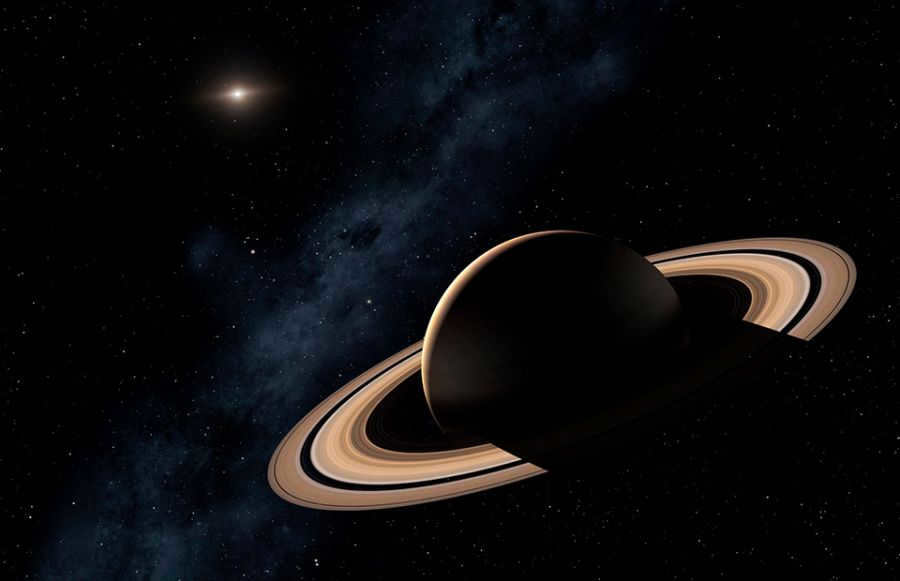
- When Galileo Galilei made his initial observations of Saturn through a telescope in 1609-1610, he observed that the planet appeared to be composed of three bodies that were almost in contact with each other. He hypothesized that these were two large “companions” of Saturn, but his findings were not confirmed two years later.
- In 1659, Christiaan Huygens used a more advanced telescope to make a discovery that the “companions” were actually a thin, flat ring encircling the planet but not in direct contact with it.
- In 1979, the Pioneer 11 spacecraft made history by conducting the first close flyby of Saturn, capturing images of the planet and some of its moons, and revealing the existence of the F ring.
- The Saturn system was explored by both Voyager-1 and Voyager-2 during the years 1980 to 1981. This mission yielded a multitude of high-resolution photographs as well as data on the temperature and density of Saturn’s atmosphere and the physical properties of its moons, including Titan.
- Since the 1990s, the Hubble Space Telescope has conducted numerous studies on Saturn, its moons, and its rings.
- The Cassini-Huygens mission was launched in 1997 with the goal of reaching Saturn. After 7 years of travel, the mission successfully entered orbit around the planet on July 1, 2004. During the mission, the Huygens probe separated from the spacecraft and descended to the surface of Titan on January 14, 2005, collecting samples of the atmosphere. Over the course of 13 years, the Cassini spacecraft revolutionized scientists’ understanding of Saturn’s system. The mission came to an end on September 15, 2017, when the spacecraft was intentionally plunged into Saturn’s atmosphere.
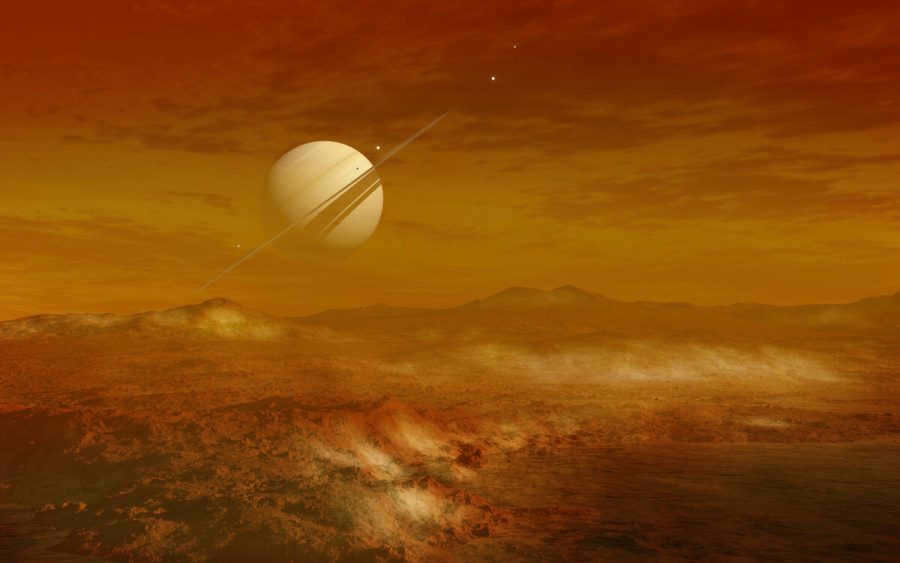
- Saturn is the only planet in the solar system with an average density lower than water, measuring only 0.687 grams per cubic centimeter.
- With a core temperature of 11,700 degrees Celsius, Saturn emits 2.5 times more energy into space than it receives from the Sun.
- The north pole of Saturn features a massive hexagonal cloud formation, with each side measuring approximately 13,800 kilometers.
- Some of Saturn’s moons, such as Pan and Mimas, act as “ring shepherds” by using their gravity to maintain the stability of the ring system.
- Scientists believe that Saturn will absorb its rings within the next 100 million years.
- In 1921, there was a speculation that the rings of Saturn had vanished. This was because, during the time of the observations, the ring system was positioned in such a way that it presented its edge towards the Earth, making it impossible to be seen from the equipment available at that time.
The average duration of a solar day on the Moon is equivalent to the average length of a synodic month, which is the average time between two identical phases of the Moon, such as full moons. This duration amounts to 29 days, 12 hours, 44 minutes, and 2.82 seconds. However, the actual length of a solar day on the Moon can deviate by up to 13 hours in either direction. This discrepancy is attributed to various factors, including the unevenness of the Earth’s orbital motion, the inclination of the Moon’s orbit to the ecliptic, the ellipticity of the Moon’s orbit, and the inclination of the Moon’s axis of rotation to the orbital plane (also known as libration).
Other moons of planets
Like the Moon, many moons orbiting planets in the solar system have an orbital period that matches the planet’s rotational period due to tidal resonance. This means that the average length of a day on these moons is similar to the time it takes for them to complete one orbit around their planet. However, there are a few exceptions to this pattern. The outermost moons of the gas giant planets, such as Theba, as well as Hyperion, have more chaotic rotations on their axes.
Planets
Gas giants, unlike planets with solid surfaces, have a unique solar day that varies depending on the latitude. This is because the atmosphere of a gas giant rotates at different speeds at different latitudes.
Mercury, on the other hand, has its own interesting characteristics. It takes 87.97 days for Mercury to complete its orbit around the Sun, and it also completes a full rotation around its axis in 58.65 days. These periods have a unique relationship of 3:2. Additionally, the average time between the two upper culminations of the Sun on Mercury is 176 days, which is equivalent to two years on the planet. It’s worth noting that when Mercury is near perihelion, the Sun can appear to move in the opposite direction for 8 days from the perspective of an observer on the planet’s surface. Therefore, strictly speaking, defining solar days based on the culmination of the Sun in this case is not entirely accurate.
On Venus, the average length of a solar day is approximately 116.7 days, which is longer than its orbital period of 224.7 days. This is because Venus rotates in the opposite direction.
Comparatively, on Mars, the average solar day is only slightly longer than Earth’s, lasting for 24 hours, 39 minutes, and 35.244 seconds.
Jupiter has a day that lasts for 9 hours, 55 minutes, and 40 seconds, while Saturn’s day is slightly longer at 10 hours, 34 minutes, and 13 seconds. The day on Uranus lasts for 17 hours, 14 minutes, and 24 seconds, and on Neptune, it lasts for 15 hours, 57 minutes, and 59 seconds.
Due to its extreme distance from the Sun, Pluto has a significantly longer solar day. It lasts for 6 days, 9 hours, 17 minutes, and 36 seconds, which is almost equal to its rotation period.
Parallax is not a term that we encounter in our everyday lives, but it plays a crucial role in measuring the distance to other planets from Earth.
Originating from the Greek word meaning “alternation,” the concept of parallax involves the measurement of the angle difference in the position of a celestial body at different times of the day. This “alternation” occurs due to the Earth’s continuous rotation.
There are three types of parallax: daily, horizontal, and annual, depending on the reference point chosen.
Horizontal parallax refers to the displacement of an observed object at the Earth’s horizon. For instance, the horizontal parallax of Jupiter when observed from Earth during opposition is 2.2 coordinate seconds.
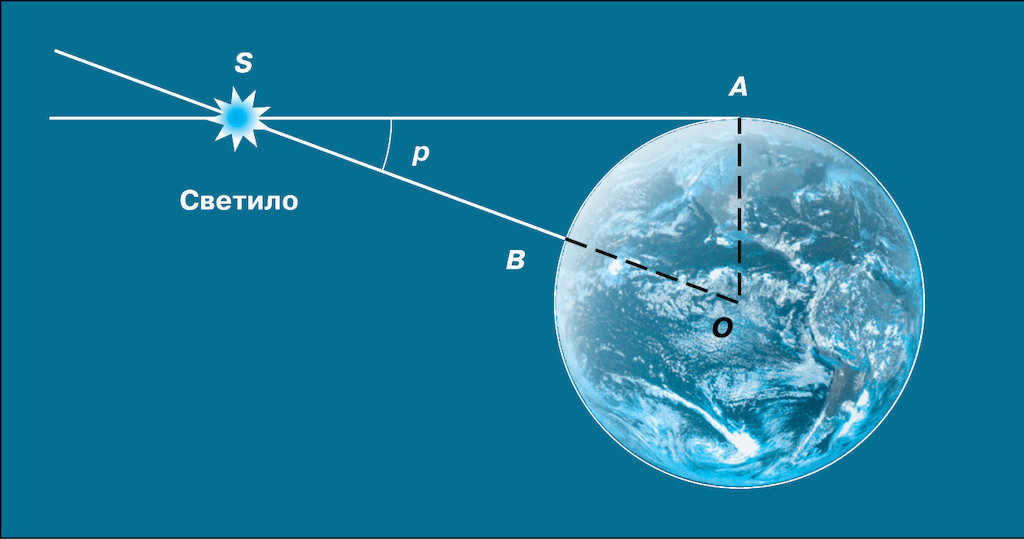
Horizontal parallax
Uranus and Neptune
The “ice giants” Uranus and Neptune offer us the fascinating experience of not only having short days lasting 17 and nearly 16 hours, respectively, but also enduring incredibly low temperatures.
On Uranus, wind speeds can reach up to 250 m/s, and the temperature drops to -224 °C (which is just slightly above the absolute zero point of -273 °C). Therefore, it would be advisable to land near the equator.
At the poles, there are extended periods of polar day and polar night that last for 42 Earth years, making it highly unlikely to witness a stunning sunrise and sunset in a single sitting.
Neptune offers a day filled with endless surprises: its weather undergoes rapid changes at supersonic speeds. The planet is constantly battered by storms, where wind speeds reach a staggering 600 meters per second, and in moments of calm, the sky is adorned with clouds of ammonia and hydrogen sulfide.
Nevertheless, it would be wiser to remain on Earth, don’t you think?
Duration of daylight on the inner planets
Mercury
If we were to visit the innermost planet in our solar system, we would find ourselves at a distance of approximately 46 million kilometers (at its closest point to the Sun) and nearly 70 million kilometers (at its farthest point from the Sun). The time it takes for Mercury to complete one rotation on its axis is slightly over 58.5 Earth days. As a result, a day on Mercury lasts for 58.5 Earth days. However, Mercury completes a full orbit around the Sun in just 88 Earth days. This means that, if we were to apply the same concept as we do on Earth, a year on Mercury would be a little over one and a half days. It would feel like a continuous celebration of the New Year!
Venus
Located 107 to 109 million kilometers away from the Sun, Venus experiences incredibly long days. Out of all the planets in the solar system, Venus has the slowest rotation. It completes one rotation around its axis at a speed of only 6.5 km/h (to put it in perspective, Earth rotates at 1670 km/h at the equator). This means that a day on Venus lasts for 243 Earth days.
Now, let’s imagine that we are on Venus. The surroundings are refreshed by a gentle rain of sulphuric acid, while the pressure forces everything to be pressed against the surface with a force of 100 atmospheres. It is daytime, but the Sun rises in the West, although it cannot be seen. The temperature is extremely hot, and the day will be incredibly long. For 8 Earth months, we will wander through the scorching sands until the much-awaited night arrives. However, even the night will not bring relief.
Mars
Mars possesses a day that closely resembles our own. The rotational period of Mars is 24 hours 37 minutes and 23 seconds, making its day only half an hour longer than ours, which is advantageous for future explorers of the red planet. This slight difference in day length allows them to adapt easily without even noticing the significant change. Additionally, Mars experiences seasons due to its nearly identical axial tilt of 25° compared to Earth’s 23.5°. These seasons are similar to those on our planet, but they last twice as long because Mars has a longer orbit around the Sun. Mars completes one revolution around the Sun in 686 Earth days.
A day spent on the planet Mercury
Mercury, the planet closest to the Sun, has an elliptical orbit rather than a perfectly circular one. At its closest point, Mercury can come within 46 million kilometers of the Sun, while at its furthest point it can be as far as 70 million kilometers away.
It takes Mercury 88 Earth days to complete one full orbit around the Sun, which is equivalent to one year on the planet. However, when it comes to a complete rotation around its own axis, Mercury only takes 58.65 Earth days, which is the length of a full day on the planet. It is interesting to note that this measurement is based on a full revolution relative to the stars, giving Mercury what is known as a sidereal day.
However, the duration of a solar day on Mercury is quite unique and distinct from that of Earth, lasting for 176 Earth days. This timespan represents the interval between two consecutive dawns on the planet. The reason for this peculiar phenomenon lies in Mercury’s close proximity to the Sun, which leads to its rapid orbital motion around the star. As a result, the planet rotates at a relatively slow pace due to the gravitational influence of the Sun, causing several local years to transpire within a single day.
Undoubtedly, the duration of a day on Mercury stands out as an extraordinary occurrence within the solar system, primarily attributable to its close proximity to the Sun. Furthermore, the planet’s inclination results in perpetual darkness at its north pole, where it is believed that water ice may exist within the craters. This region remains shielded from the Sun’s rays, preventing any heating of the surface.
The most massive celestial body
The most massive celestial body in existence is TrES-4, a planet first observed in 2006, situated in the Hercules constellation. TrES-4 is in orbit around a distant star located approximately 1400 light years away from our home planet.
TrES-4 itself is an enormous sphere primarily composed of hydrogen, with a size that is an astounding 20 times greater than that of Earth. Researchers have determined that the diameter of this newly discovered planet is nearly twice the size of Jupiter (the largest planet in our solar system), measuring at 1.7 times larger. The temperature on TrES-4 reaches a scorching 1260 degrees Celsius.
The biggest star in the universe
Undoubtedly, the most colossal star in existence is UY Shields, located in the constellation Shields and positioned approximately 9,500 light-years away from our planet. This astronomical body shines with such intensity that it surpasses our Sun by a staggering 340,000 times in brightness. Its colossal diameter stretches to an astonishing 2.4 billion kilometers, which is a mind-blowing 1700 times larger than our own celestial luminary. Surprisingly, despite its enormous size, UY Shields only weighs 30 times more than the Sun. Regrettably, this prodigious star is constantly shedding mass, earning it the nickname “the fastest burning star.”
It is worth mentioning that there is some debate among scientists regarding the identity of the largest star. While some argue that NML Swan holds this title, others contend that VY Big Dog is the true behemoth of the universe.
Largest black hole
Black holes are not quantified by their size in kilometers, but rather by their mass. The most enormous black hole can be found in the NGC 1277 galaxy, although it may not be the biggest in terms of size. However, the black hole residing in the NGC 1277 galaxy boasts a mass of 17 billion solar masses, accounting for 17% of the total mass of the galaxy. In contrast, the black hole located in our very own Milky Way galaxy has a mass equivalent to only 0.1% of the total mass of the galaxy.
The biggest galaxy
IC1101 is the colossal creature among the known galaxies of our era. It is located approximately 1 billion light years away from Earth. With a diameter of about 6 million light years, it harbors an astounding number of 100 trillion stars. To put things into perspective, the Milky Way’s diameter is merely 100 thousand light years. In terms of size, IC 1101 surpasses the Milky Way by over 50 times and is 2000 times more massive.
The largest Lyman-alpha blob (LAB)
Lyman-alpha blobs (also known as blobs or clouds) are shapeless, resembling amoebas or jellyfish, and are made up of an incredibly high concentration of hydrogen. These blobs represent the initial and extremely brief stage of the formation of a new galaxy. The most massive of these blobs, known as LAB-1, spans over 200 million light-years and can be found in the constellation Aquarius.
The image on the left shows a captured view of LAB-1 using scientific instruments, while the image on the right provides an artistic representation of what it could potentially look like up close.
A radio galaxy is a type of galaxy that exhibits significantly higher levels of radio emission compared to other galaxies.
The Largest Void in the Universe
Galaxies are typically found in gravitationally bound clusters that expand over space and time.
But what exists in the areas where galaxies are not arranged? Nothing! These are the regions of the Universe known as voids. The largest known void is called the Volopassus Void.
Located near the constellation Volopas, it boasts a diameter of approximately 250 million light years. Its distance from Earth is estimated to be around 1 billion light years.
The Enormous Cluster
The Shepley supercluster stands as the most massive gathering of galaxies in existence. Situated within the Centauri constellation, Shepley presents itself as a radiant emblem within the galactic arrangement. This colossal assemblage of celestial bodies is held together by the powerful force of gravity, spanning an astonishing length of 650 million light-years.
Quasars: The Largest Group
The Huge-LQG, also known as U1.27, holds the title for being the largest group of quasars in existence. A quasar, for those unfamiliar, is an exceptionally bright and energetic galaxy. This remarkable structure boasts a whopping 73 quasars and spans an incredible diameter of 4 billion light-years.
However, the Great GRB Wall, an equally impressive phenomenon, challenges the Huge-LQG’s claim to fame. With a staggering diameter of 10 billion light-years, the number of quasars within the Great GRB Wall remains unknown.
The mere existence of such colossal assemblies of quasars defies Einstein’s Cosmological Principle, making them a subject of double intrigue for scientists. The study of these formations promises to shed light on the mysterious nature of our universe.
The Celestial Mesh
When it comes to celestial objects, astronomers often find themselves in disagreement. However, there is one object that they all agree is the largest in the Universe – the Cosmic Web.
This immense structure consists of infinite clusters of galaxies, enveloped by dark matter, which form “knots,” and interconnected by gaseous “threads,” creating a three-dimensional web-like appearance.
Researchers theorize that the celestial mesh extends throughout the entire universe, linking all objects in space together.
The Milky Way is a spiral galaxy that contains the solar system. In the center of the solar system lies the Sun, which is the biggest celestial body in our system. The Sun, composed primarily of hydrogen and helium gases, emits immense heat and energy that are crucial for sustaining life on Earth. The solar system came into existence approximately five billion years ago when a cloud of gas and dust collapsed and compacted.
The Sun, which is classified as a yellow dwarf in astronomy, accounts for 99.866% of the total mass of our solar system. The remaining 0.134% consists of nine large planets and over 100 satellites, as well as asteroids (approximately 100,000), comets (around 10^11 objects), and numerous small fragments such as meteoroids and space dust. These objects are all connected by the powerful gravitational force that exceeds the mass of the Sun.
The inner part of the solar system is made up of the terrestrial planets, while the outer part is dominated by the giant planets. In between, there is the asteroid belt, which is home to most of the minor planets.
A fundamental characteristic of the structure of our Solar System is that all of the planets revolve around the Sun in the same direction, matching the direction of the Sun’s rotation, and also rotate on their own axis in the same direction. However, there are a few exceptions to this rule, namely Venus, Uranus, and Pluto, which have opposite axial rotations compared to the Sun’s. Interestingly, there is a relationship between a planet’s mass and the speed at which it rotates on its axis. For instance, consider Mercury, whose day lasts approximately 59 Earth days, and Jupiter, which manages to complete a full rotation in less than 10 hours.
The celestial bodies that make up our solar system
How many celestial bodies are there in our solar system?
- Mercury,
- Venus,
- Earth (including its moon),
- Mars (which has two satellites named Phobos and Deimos),
- Jupiter (which has 63 satellites),
- Saturn (with 49 satellites and its famous rings),
- Uranus (which has 27 satellites),
- Neptune (which has 13 satellites).
- In addition to the planets, there are also other celestial bodies in our solar system:
- Asteroids,
- Kuiper Belt objects (such as Quavar and Ixion),
- Dwarf planets (like Ceres, Pluto, and Erida),
- Orta cloud objects (such as Sedna and Orcus),
- Comets (including Halley’s Comet),
- Meteor bodies.
Mercury, Venus, Earth, and Mars (in order of their distance from the Sun) are commonly classified as the Earth-group planets. These four planets have orbits that extend up to the Main Asteroid Belt. They share similarities in their physical characteristics, including their relatively small sizes and masses, high average densities (several times greater than water), slow rotational speeds, and limited or no natural satellites (Earth has one, Mars has two, Mercury and Venus have none).
Terrestrial planets, also known as Earth-like or rocky planets, distinguish themselves from gas giants by their smaller size, lower mass, higher density, slower rotation, and much thinner atmospheres. For instance, Mercury, which has virtually no atmosphere, experiences extreme temperature variations between its day and night sides. The terrestrial planets generally have much higher temperatures than the gas giants, with Venus reaching scorching temperatures of up to 500 degrees Celsius. Moreover, the elemental compositions of the Earth-like planets and the gas giants exhibit significant differences. Jupiter and Saturn consist primarily of hydrogen and helium, similar to the composition of the Sun. In contrast, the Earth-like planets contain a multitude of heavy elements. Iron comprises the largest portion of the Earth’s composition at 35%, followed by oxygen at 29% and silicon at 15%. The crust of these planets is rich in aluminum and silicon oxides. Consequently, the elemental composition of the Earth is vastly dissimilar to that of the Sun.
What are some massive planets?
Jupiter, Saturn, Uranus, and Neptune are among the massive planets in our solar system. These planets have a significant size but a low density due to their composition of hydrogen and helium gas. Interestingly, the giant planets account for approximately 98% of the total mass of all planets in our solar system! Jupiter and Saturn even emit slightly more heat from their cores than they receive from the Sun. In contrast, the heat flux from Earth’s core is negligible compared to the energy it receives from the Sun. The distant positions of Uranus and Neptune result in their abundance of ice, earning them the title of ice giants.
Comparing the sizes of planets in our solar system
Planets of this kind have a significant number of satellites, unlike the planets in the Earth group, and possess a substantial rotational velocity. Satellites are small celestial bodies that orbit around the planets. The space between the planets is filled with minute solid particles and tenuous gases.
When is the best time to observe Jupiter?
Jupiter, the Moon, and Venus in the nocturnal sky
Examining Jupiter does not present significant difficulties even for amateur astronomers. It is only surpassed by Venus, the Moon, and the Sun in terms of brightness at its maximum luminosity. The ideal period for studying it comes during the opposition, which happens annually with a one-month deviation from the previous year’s date. Typically, during the summer opposition, Jupiter remains relatively close to the horizon.

